Winter is here! Check out the winter wonderlands at these 5 amazing winter destinations in Montana
- Travel Guide

What Do You Call A Museum Tour Guide
Published: January 16, 2024
by Glenn Pinto
What Do You Call Museum Tour Guide
A museum tour guide is often referred to as a docent or a museum educator. They play a crucial role in enhancing the visitor experience by providing informative and engaging tours of exhibits and collections. These knowledgeable individuals are experts in the history, art, or subject matter of the museum and are able to communicate their passion and expertise to the visitors.
The term “docent” is derived from the Latin word “docere,” which means “to teach.” It emphasizes the educational aspect of the role, as museum tour guides are responsible for educating visitors about the artworks, artifacts, or historical events depicted in the museum.
While the term “docent” is commonly used, some museums may refer to their tour guides as museum educators or interpreters. This change in terminology reflects a shift towards a more interactive and educational approach to guiding visitors through the museum.
Regardless of the title, a museum tour guide serves as a bridge between the collections and the visitors, offering insights and context that enrich their understanding and appreciation of the exhibits.
Introduction
Visiting a museum is not just about admiring the artwork or artifacts on display; it is an opportunity to embark on a journey of discovery, learning, and appreciation of human history and culture. And who better to guide us on this journey than a museum tour guide?
A museum tour guide is a knowledgeable and passionate individual who brings the exhibits and collections to life. They have a deep understanding of the subject matter and are skilled communicators, capable of sharing their expertise with visitors in a compelling and engaging way.
Whether you’re interested in art, history, science, or any other field, a museum tour guide can provide valuable insights and spark your curiosity. From explaining the techniques used by a famous painter to discussing the historical background of a significant event, they offer a unique perspective that enriches the museum experience.
But being a museum tour guide is not just about reciting facts and figures. It involves creating a connection with the visitors, igniting their enthusiasm, and making the exhibits relevant and relatable. Through storytelling, anecdotes, and interactive activities, tour guides create a dynamic and immersive experience that leaves a lasting impression.
In this article, we will explore the role of a museum tour guide, the qualifications required, the training and education involved, as well as the responsibilities and challenges faced by these dedicated individuals. Whether you aspire to become a museum tour guide or simply want to appreciate their vital contribution, join us on this journey as we delve into the fascinating world of museum tours.
Role of a Museum Tour Guide
The role of a museum tour guide is multi-faceted and goes beyond simply providing information about the exhibits. They serve as ambassadors of the museum, facilitating engagement and understanding for visitors of all ages and backgrounds. Let’s explore the key roles and responsibilities of a museum tour guide:
- Educator: One of the primary roles of a museum tour guide is to educate visitors about the artworks, artifacts, or historical events showcased in the museum. They provide insightful commentary and historical context, helping visitors to develop a deeper understanding and appreciation of the exhibits.
- Storyteller: Effective tour guides have the ability to tell captivating stories that bring the exhibits to life. They weave narratives that connect the past with the present, sparking visitors’ imagination and curiosity.
- Interpreter: Museum tour guides act as interpreters, decoding the language of art, history, or science for visitors who may not have a background in those fields. They translate complex concepts into easily understandable language, making the exhibits accessible to everyone.
- Facilitator: Tour guides create an interactive and engaging experience for visitors. They encourage questions, facilitate discussions, and promote hands-on activities, all with the aim of fostering a deeper connection between the visitors and the exhibits.
- Guide: As the name suggests, museum tour guides guide visitors through the museum, ensuring they have a comprehensive understanding of the exhibits. They navigate through different galleries and provide direction, helping visitors make the most of their time and explore areas of interest.
- Enthusiast: A museum tour guide is passionate about the subject matter and conveys that enthusiasm to visitors. Through their own excitement and love for the collections, they inspire visitors to engage with the exhibits on a more personal level.
By fulfilling these various roles, museum tour guides enhance the visitor experience, making it educational, entertaining, and memorable. They play a vital role in connecting people with art, history, science, and culture, making museums vibrant and dynamic spaces for learning and exploration.
Qualifications and Skills
While formal education requirements may vary, there are certain qualifications and skills that are essential for a museum tour guide to possess. Here are some of the key qualifications and skills needed to succeed in this role:
- Knowledge of the Subject Matter: A museum tour guide should have a deep understanding of the subject matter exhibited in the museum. This may include knowledge of art history, historical events, scientific principles, or any other area of focus. They must be well-versed in the collection and be able to provide accurate and insightful information to visitors.
- Strong Communication Skills: Excellent communication skills are vital for a museum tour guide. They need to effectively convey information to visitors of varying ages, backgrounds, and levels of knowledge. Clear and articulate communication helps to engage and captivate the audience, ensuring that the information is easily understood.
- Public Speaking and Presentation Skills: Public speaking is an essential skill for a museum tour guide. They should be confident, engaging speakers who can hold the attention of a group and deliver information in a compelling manner. The ability to present information in an organized and engaging way enhances the visitor’s experience.
- Interpersonal Skills: Museum tour guides interact with diverse groups of visitors on a daily basis. Strong interpersonal skills are necessary to connect with visitors, make them feel comfortable, and encourage interaction. They should be approachable, patient, and able to adapt their communication style to suit different individuals or groups.
- Passion and Enthusiasm: A genuine passion for the subject matter is crucial. Museum tour guides should have a deep interest in art, history, science, or whatever field they are presenting. Their enthusiasm is contagious and helps to create an engaging and memorable experience for visitors.
- Flexibility and Adaptability: Museum tour guides need to be adaptable and able to handle unexpected situations. The ability to think on their feet, adjust tour content to suit different groups, and handle challenging questions or situations is essential. They should also be comfortable with changes in exhibits or museum layouts.
- Continuous Learning: The world of art, history, and science is ever-evolving, and museum tour guides should be committed to continuous learning. Staying updated with the latest research, attending workshops or seminars, and expanding their knowledge helps to provide visitors with current and accurate information.
While not all of these qualifications and skills may be required in every museum or for every tour guide position, they are generally valued and sought after in the industry. Developing and honing these skills can make a museum tour guide more effective and successful in providing an exceptional visitor experience.
Training and Education
While formal education requirements for museum tour guides can vary, there are several training and educational pathways that can help individuals excel in this role. Here are some of the common training and education opportunities for aspiring museum tour guides:
- Art, History, or Science Background: Many museum tour guides have a background in art, history, science, or a related field. A bachelor’s degree or higher in these subjects can provide a comprehensive understanding of the subject matter exhibited in the museum.
- Internships and Volunteering: Internships and volunteering opportunities at museums can offer valuable hands-on experience and exposure to the museum environment. This can be a great way to gain practical knowledge and develop the necessary skills for guiding visitors.
- Guiding and Interpretation Courses: There are specialized courses available that focus on museum guiding and interpretation. These courses cover topics such as public speaking, presentation skills, storytelling, and how to engage visitors effectively.
- Museum Training Programs: Many museums offer in-house training programs for their tour guides. These programs provide a comprehensive understanding of the museum’s collection, exhibits, and educational goals. They may also cover communication techniques, tour design, and visitor engagement strategies.
- Certification Programs: Some organizations offer certification programs specifically designed for museum tour guides. These programs typically involve coursework, practical training, and assessments to ensure that tour guides meet certain standards of knowledge and professionalism.
- Continuing Education: The museum field is constantly evolving, so it is important for museum tour guides to engage in continuing education. This can involve attending workshops, seminars, conferences, and taking additional courses to stay updated with the latest trends and research.
It’s worth noting that while formal education and training can provide a solid foundation, hands-on experience and practical skills play a significant role in becoming a successful museum tour guide. The ability to engage visitors, adapt to different audience needs, and convey information in an engaging and relatable manner are often honed through on-the-job experience and continuous learning.
Ultimately, a combination of education, training, and real-world experience contributes to the development of a well-rounded museum tour guide who can create a memorable and enriching visitor experience.
Responsibilities and Duties
As museum tour guides are the primary point of contact between visitors and the exhibits, they have a range of responsibilities and duties to ensure a seamless and enriching experience. Here are some of the key responsibilities and duties of a museum tour guide:
- Conducting Tours: The primary duty of a museum tour guide is to lead tours and provide informative and engaging commentary on the exhibits. They navigate through different galleries, discussing the significance, historical context, and artistic or scientific elements of the exhibited works.
- Adapting to Visitors: Museum tour guides need to adapt their tours to suit the needs and interests of the visitors. This may involve adjusting the level of information based on the age group or knowledge level of the audience, or catering to specific interests or requirements of individuals or groups.
- Providing Interpretation: Museum tour guides serve as interpreters, helping visitors understand and interpret the artworks, artifacts, or historical events. They explain the symbolism, techniques, and cultural context, making the exhibits accessible and relatable to a wide range of visitors.
- Engaging Visitors: Tour guides actively engage visitors by encouraging questions, facilitating discussions, and promoting interactive activities. They create a welcoming and inclusive environment that encourages visitor participation and fosters a deeper connection with the exhibits.
- Ensuring Visitor Safety: Museum tour guides have a responsibility to ensure the safety and well-being of visitors during the tour. They need to be aware of any safety protocols, emergency exits, and potential hazards within the museum.
- Continuing Research: To provide accurate and up-to-date information, tour guides are expected to engage in ongoing research and stay informed about the latest research and scholarship. This ensures that they can offer visitors the most current and comprehensive knowledge about the museum’s collections.
- Maintaining Professionalism: Museum tour guides should maintain a professional and courteous demeanor at all times. They represent the museum and are responsible for creating a positive and enjoyable experience for visitors. This includes following the museum’s code of conduct, being punctual, and dressing appropriately.
- Serving as Museum Ambassadors: Tour guides play a crucial role in enhancing the museum’s image and reputation. They act as ambassadors, promoting the museum’s mission, programs, and events. They may also provide recommendations for other attractions, dining, and accommodations in the area to enhance the visitor’s overall experience.
These responsibilities and duties require a combination of knowledge, expertise, and interpersonal skills. By fulfilling these responsibilities, museum tour guides contribute to creating a memorable and educational experience for visitors, ensuring that they leave with a deeper appreciation for the exhibits and the museum as a whole.
Importance of a Museum Tour Guide
Museum tour guides play a vital role in shaping the visitor experience and adding value to a museum visit. Here are some reasons highlighting the importance of museum tour guides:
- Enhancing Understanding: Museum tour guides provide valuable insights, background information, and context that help visitors to better understand and appreciate the exhibits. They bring the stories behind the artworks, artifacts, or historical events to life, making the visit a more engaging and educational experience.
- Interpretation and Engagement: Through their expertise and storytelling abilities, museum tour guides interpret the exhibits for visitors in an accessible and relatable manner. They engage visitors through interactive activities, discussions, and answering questions, fostering a deeper connection with the artifacts or artworks.
- Personalized Experiences: Tour guides have the ability to adapt their tours to suit the interests, knowledge levels, and preferences of the visitors. They can provide customized experiences that cater to specific age groups, educational backgrounds, or areas of personal interest, making the visit more meaningful for every individual.
- Enriching the Visit: A museum tour guide adds a layer of depth to the visit, sharing stories, historical context, and lesser-known facts that may not be immediately apparent from the exhibits alone. They enhance the overall experience, providing visitors with a more comprehensive understanding and appreciation of the collections.
- Highlighting Significance: Tour guides help visitors understand the significance of the exhibits in relation to the larger historical, cultural, or artistic context. They shed light on the importance of certain artworks or artifacts, helping visitors recognize their impact and contribution to human history or the development of a particular subject.
- Creating Memorable Experiences: A skillful and passionate museum tour guide has the ability to create memorable experiences for visitors. Through their storytelling, enthusiasm, and expertise, they leave a lasting impression, making the museum visit a highlight of the visitor’s overall travel or cultural experience.
- Maximizing Engagement and Learning: Museum tour guides facilitate active learning and engagement with the exhibits. By encouraging visitors to ask questions, participate in discussions, and interact with the artworks or artifacts, they stimulate curiosity, critical thinking, and a deeper understanding of the subject matter.
Ultimately, museum tour guides serve as bridges between the collections and the visitors, transforming a museum visit from a passive observation to an interactive and meaningful experience. Their knowledge, passion, and ability to connect with visitors are invaluable in educating, inspiring, and enriching the overall museum journey.
Challenges Faced by Museum Tour Guides
Museum tour guides face various challenges in their role as facilitators of educational and engaging experiences. Here are some of the common challenges faced by museum tour guides:
- Varied Audience: Museum tour guides encounter visitors with different backgrounds, ages, knowledge levels, and interests. Adapting the tour to cater to the needs and preferences of such a diverse audience can be challenging, as they need to strike a balance between providing in-depth information and keeping it accessible and engaging for everyone.
- Time Constraints: Museum tours are often conducted within a limited time frame. This poses a challenge for tour guides as they need to cover a significant amount of information within that time period. Balancing the need to provide comprehensive information with ensuring that visitors do not feel rushed requires careful planning and time management skills.
- Unpredictable Visitor Behavior: Museum tour guides encounter visitors with varying levels of interest, attention spans, and behavior. Dealing with disruptive or disinterested visitors can be challenging. Tour guides need to maintain professionalism and find creative ways to engage and captivate the audience, even in challenging situations.
- Complex Subject Matter: Many museums exhibit artworks, artifacts, or concepts that can be complex and nuanced. Explaining these topics in a way that is accessible and understandable to visitors who may not have a background in the subject matter can be a challenge. Tour guides must break down complex ideas into digestible pieces and find relatable examples to ensure comprehension.
- Keeping Up with Changes: Museums frequently update their exhibits, add new artworks, or make changes to their displays. This means that museum tour guides need to stay updated with these changes to provide accurate and current information during their tours. Continuous learning and staying informed about the museum’s collections can be a challenge in itself.
- Maintaining Energy and Enthusiasm: Conducting multiple tours in a day can be physically and mentally demanding. Maintaining high energy levels and enthusiasm throughout the day can be challenging, especially when dealing with large groups or challenging visitors. Tour guides need to find ways to recharge and maintain their passion for the subject matter to deliver engaging tours consistently.
- Language Barriers: In museums that attract international visitors, tour guides may face language barriers. Overcoming language differences while delivering informative and engaging tours requires strong communication skills and the ability to employ non-verbal communication techniques effectively.
Despite these challenges, museum tour guides are dedicated professionals who find ways to navigate these obstacles and create meaningful and memorable experiences for visitors. They are integral in bridging the gap between the exhibits and the visitors, making the museum journey more accessible, engaging, and enjoyable.
Tips for Becoming a Museum Tour Guide
If you are passionate about art, history, science, or any other museum-related subject, and aspire to become a museum tour guide, here are some tips to help you embark on a fulfilling career:
- Deepen Your Knowledge: Develop a deep understanding of the subject matter you are interested in. Read books, attend lectures, and explore online resources to expand your knowledge and expertise.
- Visit Museums: Immerse yourself in the museum experience by visiting different museums and exhibitions. Pay attention to the tour guides and their techniques, and observe how they engage with visitors.
- Seek Education and Training: Pursue formal education or training in art, history, or a related field. Look for courses or workshops that focus on public speaking, interpretation, storytelling, and other skills relevant to being a museum tour guide.
- Gain Experience: Seek volunteer opportunities or internships at museums to gain practical experience. This will not only enhance your knowledge but also provide valuable insights into the day-to-day operations of a museum.
- Develop Communication Skills: Hone your public speaking and communication skills. Practice presenting information in a clear and engaging manner, and work on effectively conveying complex concepts to different audiences.
- Study Different Tour Styles: Explore different tour styles and techniques used by experienced tour guides. Learn about different engagement strategies, storytelling methods, and interactive activities that can enhance the visitor experience.
- Embrace Continuous Learning: Stay updated with the latest research, trends, and developments in your field of interest. Attend conferences, workshops, and seminars to expand your knowledge and incorporate new insights into your tours.
- Develop Interpersonal Skills: Enhance your interpersonal skills to connect with visitors from diverse backgrounds. Practice active listening, empathy, and adaptability to create a welcoming and inclusive environment for all visitors.
- Network: Build connections within the museum industry. Attend museum events, join professional organizations, and engage with other museum professionals. Networking can provide you with valuable opportunities, mentorship, and insights into the industry.
- Be Passionate and Authentic: Cultivate a genuine passion for your subject matter and showcase your enthusiasm during tours. Authenticity and a personal connection to the exhibits will resonate with visitors and enhance their experience.
Remember, becoming a museum tour guide is a continuous learning journey. Embrace opportunities for growth, seek feedback, and always strive to improve your skills and knowledge. With dedication, a love for learning, and a passion for sharing your expertise, you can embark on a rewarding career as a museum tour guide.
Museum tour guides are the unsung heroes of the museum world, providing invaluable knowledge, interpretation, and engagement to visitors of all ages and backgrounds. Their role goes beyond being mere conveyors of information; they are storytellers, educators, and facilitators of meaningful experiences.
Throughout this article, we have explored the various aspects of being a museum tour guide, from their qualifications and skills to the challenges they face. We have highlighted the importance of their role in enhancing understanding, creating personalized experiences, and maximizing visitor engagement and learning.
To become a museum tour guide, it is important to develop a deep knowledge of the subject matter, hone your communication and presentation skills, and gain practical experience through internships or volunteering. Continuous learning, adaptability, and a genuine passion for the exhibits are also crucial in delivering exceptional guided tours.
While there may be challenges faced by museum tour guides, such as varied audience needs, time constraints, and language barriers, their dedication and passion make them capable of overcoming these obstacles.
In conclusion, museum tour guides play a vital role in connecting visitors with the rich cultural and historical treasures exhibited in museums. They bring exhibits to life, spark curiosity, and leave visitors with a deeper understanding and appreciation for art, history, science, or any other subject matter. Their enthusiasm and expertise create memorable and meaningful experiences that inspire lifelong learning and a love for museums.
So, the next time you visit a museum, take a moment to thank and appreciate the museum tour guides who dedicate themselves to enriching our cultural experiences and broadening our horizons.

- Privacy Overview
- Strictly Necessary Cookies
This website uses cookies so that we can provide you with the best user experience possible. Cookie information is stored in your browser and performs functions such as recognising you when you return to our website and helping our team to understand which sections of the website you find most interesting and useful.
Strictly Necessary Cookie should be enabled at all times so that we can save your preferences for cookie settings.
If you disable this cookie, we will not be able to save your preferences. This means that every time you visit this website you will need to enable or disable cookies again.
Not Your Grandma's Museum Tours
Museum Hack leads renegade, guided tours of the world’s best museums. We do art tours, history tours, walking tours, city tours and more. Our museum tour guides are experts in the obscure and collectors of amazing hidden stories about the art, objects, artifacts and museum itself.
- Los Angeles
- San Francisco
- Washington DC
⭐⭐⭐⭐⭐ 5400+ Reviews
What Makes Our Tours Awesome
World class guides.
Renegade Guides are award winning entertainers, comedians, academics and nerds; this is not your average docent tour. New guides train in the Museum Hack craft for 3 months before ever leading a tour.
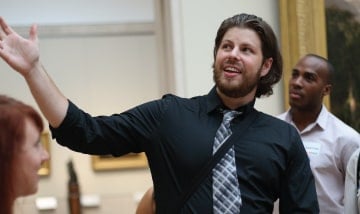
Smart Humor, Mind Blowing Facts, Juicy Gossip
If you prefer your history drunk and a little sassy then you are our kind of people. We do deep research into the museum collections to learn the facts you won't find on the plaques, and then build out stories that connect with stuff in your life.
Small Group, VIP , Social Experience
Our standard group size is 10 or less, which is important because your guide will know you by name and can personalize the tour for what you want to see. It's also a great social experience, so you can come solo and make new friends or bring your SO, BFF, mom, grandma, OkCupid / Bumble / Grindr-crush, Tamagotchi, FWB or entire squad.
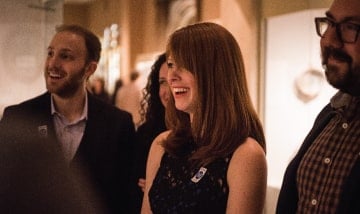
Admission Included, Skip the Line
All full price tickets include museum admission, up to a $25 value (so the tour portion is more like $34 - $44). When you arrive at the museum, your guide will have your admission ready so you can launch right into the tour without waiting in line.
Featured on TripAdvisor, 5400+ 5 Star Reviews
Guests often call our guided tours "the best museum tour you will ever go on" and sometimes "pretty f***ing awesome!" You may have noticed companies intentionally sharing average reviews of like 4.7 stars, which they do because a study a few years back said the internet trusts that more than a perfect 5.0. Our actual average is 5/5, so f**k it.
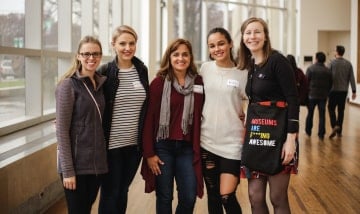
100% "You'll Love It" Guarantee
Our Renegade Guides are wicked smart and will take you on a sassy, whirlwind tour of the museum. Most guests LOVE this experience and if you feel anything other than 10/10 then we will refund your money.
Join An Upcoming Tour

What Does a Museum Guide Do?
Find out what a Museum Guide does, how to get this job, salary information, and what it takes to succeed as a Museum Guide.

The Museum Guide serves as the face of the museum’s educational mission, offering visitors a window into the rich tapestry of history, art, and culture housed within its walls. Through engaging narratives and insightful explanations, they enhance the visitor experience, making each exhibit more accessible and enjoyable. This role involves a delicate balance of sharing knowledge, facilitating discovery, and fostering an appreciation for the museum’s collections. By tailoring their approach to suit diverse audiences, Museum Guides ensure that each guest leaves with a deeper understanding and a heightened curiosity about the subjects on display. Their contributions are instrumental in creating a memorable and educational visit, encouraging public engagement with the museum’s offerings.
Museum Guide Job Duties
- Greet visitors and provide them with an overview of the museum, including layout, special exhibits, and general rules.
- Lead guided tours, tailoring the presentation to the specific interests and age groups of the audience.
- Answer visitors’ questions about the museum’s collections, exhibits, and history in an informative and engaging manner.
- Monitor galleries to ensure the safety of the exhibits and the comfort of visitors, addressing any concerns or issues that arise.
- Facilitate interactive educational activities and workshops for a variety of audiences, including school groups and families.
- Collect and report feedback from visitors to museum management to help improve the visitor experience.
- Assist in the setup and takedown of temporary exhibits, ensuring that all pieces are handled with care.
- Perform light maintenance and cleaning tasks in exhibit areas to ensure spaces are presentable and welcoming to visitors.
Museum Guide Salary & Outlook
Salaries for Museum Guides can vary based on the institution’s size, funding, and prestige. Experience and specialized knowledge in the museum’s focus area significantly impact earnings. Guides fluent in multiple languages or with expertise in engaging diverse audiences may command higher salaries. Seasonal visitor traffic also influences income potential.
- Median Annual Salary: $51,975 ($24.99/hour)
- Top 10% Annual Salary: $109,800 ($52.79/hour)
The employment of museum guides is expected to grow faster than average over the next decade.
This growth is driven by increasing tourism, a rising interest in cultural education, and museums expanding their interactive and educational programs to enhance visitor experiences. Museum Guides are crucial in facilitating these engaging, informative tours, thus elevating the demand for their expertise.
Museum Guide Job Requirements
Education: Museum Guide positions often require a diverse educational background. Candidates typically hold degrees ranging from Associate’s to Bachelor’s, with majors in history, art history, archaeology, or museum studies being particularly relevant. A High School Diploma is a minimum for some roles, emphasizing the importance of courses in history, communication, and public speaking. Education in these areas equips guides with the knowledge and skills to engage and educate visitors effectively.
Experience: Museum Guides often come from diverse backgrounds, with a significant portion having prior experience in customer service, public speaking, or educational roles. On-the-job training is common, allowing guides to familiarize themselves with the museum’s collections, exhibit themes, and the storytelling aspect of their role. Training programs may also cover crowd management and engagement techniques, ensuring guides can effectively communicate and interact with visitors of all ages. Continuous learning is encouraged to keep up with new exhibits and historical research.
Certifications & Licenses: Museum Guide positions typically do not require specific certifications or licenses.
Museum Guide Skills
Art History: Delving into the progression of artistic movements, techniques, and their socio-political influences equips museum guides with the tools needed to enhance visitor experiences. Such knowledge facilitates accurate presentation of artworks and fosters a deeper appreciation among audiences, effectively bridging historical contexts with contemporary perceptions.
Public Speaking: The ability to share the history and art with enthusiasm and clarity ensures that visitors of all ages gain a deeper understanding and appreciation of the exhibits. Skilled communication transforms a simple tour into an engaging, memorable experience, highlighting the importance of this skill for museum guides.
Exhibit Design: Creating engaging and educational displays involves a thorough understanding of subject matter and visual storytelling principles. Attention to detail in selecting artifacts, and strategic use of lighting and space, are crucial for crafting immersive experiences that captivate diverse audiences.
Cultural Sensitivity: Guides adeptly respect the diverse cultural backgrounds of their audience, ensuring narratives are inclusive. This approach fosters a welcoming environment, encouraging appreciation for artifacts and stories from various cultures, thereby enhancing the educational experience.
Visitor Engagement: Through storytelling, interactive dialogue, and tailored presentations, guides create memorable and educational experiences. This method enriches the visitor’s journey, promoting a deeper appreciation and understanding of the museum’s collections.
Educational Programming: Designing engaging, informative experiences for diverse audiences requires blending historical accuracy with storytelling. Guides must have a profound knowledge of the museum’s collections and the ability to create programs that are both accessible and engaging, ensuring visitors of all ages leave with a richer understanding of the exhibits.
Museum Guide Work Environment
Museum Guides operate in a unique setting where history and art converge, spending most of their time within the museum’s galleries and exhibit spaces. Their workspace is dynamic, surrounded by artifacts and artworks, requiring them to navigate through different rooms and sometimes confined spaces. The tools of their trade are relatively simple, often including audio-visual aids, mobile devices for accessing information, and occasionally handling protective equipment for artifacts.
The work hours for Museum Guides can vary, often aligning with the museum’s operating hours, which may include weekends and public holidays. This role demands a certain level of flexibility, especially during special exhibitions or events. Dress codes are generally in place, aiming to reflect the museum’s professional atmosphere, often requiring guides to wear attire that is both smart and practical for their day-to-day duties.
Interaction with visitors is at the heart of a Museum Guide’s role, necessitating excellent communication skills and a patient demeanor. The environment is generally quiet, aiming to create a contemplative space for visitors, though noise levels can rise during busy periods or events. Despite the physical demands and the need for constant engagement with the public, the role offers a rewarding experience for those passionate about education and cultural preservation.
Advancement Prospects
Museum Guides can advance their careers by specializing in certain historical periods or types of art, positioning themselves as experts and potentially leading to roles such as Curatorial Assistants. Gaining experience in various exhibitions enhances their prospects for such transitions.
Developing strong storytelling and public speaking skills can open opportunities in educational programming within museums. Guides with a knack for engaging diverse audiences might progress to Education Coordinator positions, where they design and implement public programs.
Another path involves moving into administrative roles, such as Visitor Services Manager, where responsibilities expand to overseeing staff, budgeting, and enhancing the overall visitor experience. Success in this area requires a deep understanding of museum operations beyond the exhibit halls.
To achieve these advancements, Museum Guides should seek opportunities for involvement in project management and exhibit planning, demonstrating their capability to handle larger responsibilities within the museum setting.
What Does a Doorman Do?
What does a medicare sales agent do, you may also be interested in..., what does a onemain financial personal loan specialist do, what does a director of community engagement do, what does a personal injury case manager do, what does a radio operator do.
What is a museum tour guide and how to become one
A museum tour guide is a professional who leads visitors through museum exhibits and shares information about the artifacts and history on display. They provide educational tours for individuals, groups, and even schools. They also prepare curriculum for educational programs, manage customer service, and handle financial transactions in museum gift shops. Their role also involves answering questions about the museum, its exhibits, and its history. Tour guides must have a good understanding of the museum's collections and be able to explain them in a clear and concise manner.
How long does it takes to become a museum tour guide?
It typically takes 2-3 years to become a museum tour guide:
- Year 1-2: Obtaining an associate degree in a relevant field, such as art history or museum studies.
- Year 3: Accumulating the necessary work experience in tour guide duties, such as leading tours, providing information about exhibits, and answering visitor questions.
- Salary $31,318
- Jobs Number 1,113
- Most Common Skill Museum Tours
- Most Common Degree Bachelor's degree
- Best State Tennessee
Museum Tour Guide career paths
A museum tour guide's skills and knowledge can lead to various career paths. They may become a teacher, imparting their knowledge to students, or a consultant, helping organizations make informed decisions. They may also consider roles like a project manager or executive assistant, where they can manage and oversee projects and operations.
Key steps to become a museum tour guide
Explore museum tour guide education requirements.
The educational requirements for a museum tour guide are varied, with the majority holding at least an Associate degree. According to the data, 32.48% of museum tour guides have an Associate degree, 30.03% have a Bachelor's degree, and 3.85% have a Master's degree. However, a significant number, 21.82%, have only a high school diploma. Certifications such as First Aid, CPR and AED Instructor, Travel and Tourism Professional, and Certified Tour Guide / Director can also be beneficial. Common majors for museum tour guides include History, Graphic Design, Psychology, English, and Business. Top schools for these majors include Stanford University, Harvard University, University of Pennsylvania, Yale University, and Cornell University.
Most common museum tour guide degrees
Bachelor's
Master's
Start to develop specific museum tour guide skills
Museum tour guides need a range of skills. They provide educational tours of exhibits, perform customer service, and answer questions. They may also develop and present programs, research topics, and monitor visitors' activities to ensure safety. They must be able to communicate effectively and answer inquiries from visitors.
Complete relevant museum tour guide training and internships
Research museum tour guide duties and responsibilities.
Museum tour guides provide educational and informative tours of exhibits, conduct workshops, and answer questions for visitors. They also handle customer service and fiscal transactions in the gift shop, and even conduct interactive programs like campfires and summer-school classes. They may also design personalized tour guides and assist in customer service for prospective students.
- Manage the canoe landing including guests, workers, and canoe traffic in a way that all run smoothly and safely.
- Facilitate a therapeutic outdoor adventure experience for teenagers struggling with a variety of behavioral, mental health and substance abuse challenges.
- Deliver a service-focuse guest experience through excellent leadership and communication skills, and problem-solving expertise.
Prepare your museum tour guide resume
When your background is strong enough, you can start writing your museum tour guide resume.
You can use Zippia's AI resume builder to make the resume writing process easier while also making sure that you include key information that hiring managers expect to see on a museum tour guide resume. You'll find resume tips and examples of skills, responsibilities, and summaries, all provided by Zippi, your career sidekick.
Choose From 10+ Customizable Museum Tour Guide Resume templates

Apply for museum tour guide jobs
Now it's time to start searching for a museum tour guide job. Consider the tips below for a successful job search:
- Browse job boards for relevant postings
- Consult your professional network
- Reach out to companies you're interested in working for directly
- Watch out for job scams

Are you a Museum Tour Guide?
Share your story for a free salary report.
Average museum tour guide salary
The average Museum Tour Guide salary in the United States is $31,318 per year or $15 per hour. Museum tour guide salaries range between $17,000 and $56,000 per year.
What Am I Worth?
How do museum tour guides rate their job?
Updated April 25, 2024
Editorial Staff
The Zippia Research Team has spent countless hours reviewing resumes, job postings, and government data to determine what goes into getting a job in each phase of life. Professional writers and data scientists comprise the Zippia Research Team.
Museum Tour Guide Related Careers
- Art Museum Aide
- Campus Tour Guide
- Driver/Guide
- Escort Service Attendant
- Fishing Guide
- Hunting Guide
- Museum Attendant
- Museum Guide
- Outdoor Guide
- River Guide
- River Rafting Guide
Museum Tour Guide Related Jobs
- Art Museum Aide Jobs
- Campus Tour Guide Jobs
- Docent Jobs
- Driver/Guide Jobs
- Escort Jobs
- Escort Service Attendant Jobs
- Fishing Guide Jobs
- Hunting Guide Jobs
- Museum Attendant Jobs
- Museum Guide Jobs
- Outdoor Guide Jobs
- River Guide Jobs
- River Rafting Guide Jobs
What Similar Roles Do
- What Does an Escort Do
- What Does a Guide Do
- What Does a River Rafting Guide Do
- What Does a Tour Guide Do
Resume For Related Jobs
- Docent Resume
- Escort Resume
- Guide Resume
- Tour Guide Resume
- Zippia Careers
- Personal Care and Attendants Industry
- Museum Tour Guide
Browse personal care and attendants jobs
- Season Pass
Search Museum Next
Subscribe to the latest museum thinking.
Fresh ideas from museums around the globe in your inbox each week
- Consent * I agree to the Privacy Policy

The Changing Face of Museum Tours

There was a time when the mention of a museum tour evoked images of branded blazers, heavily scripted journeys around a single collection and a marching troupe lead by an umbrella wielding uniformed guide. For some attractions that time is still now but, for many forward thinking museums and individual arts and heritage lovers, there are new types of museum tours that are attracting a new type of visitor.
A quick online search of “museum tours” will bring you back a plethora of options, from behind the scenes tours of your favourite collection to a one on one bespoke tour of a museum you’ve never visited with a local guide. There are no longer heavily prescribed ways to learn about museum collections and I believe that is a thing to celebrate. There are a myriad ways to enter, explore and learn about well-known museums as well as unfamiliar collections and an engaging tour can be a great place to start.

Who Needs a Museum Tour Guide Anyway?
For many years, museums relied on human tour guides to assist their visitors with finding objects, discovering new collections and learning about the history and importance of the objects they cared for but in recent years many have turned to technology to reduce costs and improve the reach of tours. Without the need for a human tour guide the content of the tour becomes much more malleable. Pre-recorded tours can be replayed for those who need additional time to digest, translated into many languages that your staff members do not speak and made cheaper or even free to use.
With the first audio tour available to the public in 1952 at the Stedelijk Museum , Amsterdam it’s hardly new technology but the impact of those first audio tours can be felt throughout the museum industry. Most museums have had a form of audio tour at some point and, whilst many have now been adapted into personal phone technology and apps, the audio tour is still a strong contender today when looking to increase tour throughput. The traditional audio tours options for multiple languages and variable content combined with its reusable and easy to use technology made it an obvious choice for sharing understanding of collections.
Audio tours transformed the way the public interacted with the museum collections. Multiple languages could be used to open up collections to new audiences and visitors could learn more about objects at their own pace, revisiting objects that they wanted to spend more time on and skipping over those that were more familiar to them. Even before the advent of the smartphone the easy to use technology put learning into the hands of many people around the world.
Today over 2.5 billion people own a smart phone and this is allowing many museums to utilise the technology already in the hands of their visitors to reduce hardware costs and instead concentrate on providing content for their apps and downloadable tours. We still need knowledgeable tour guides with the ability to teach and inspire but now they can reach hundreds of visitors at once instead of small groups.
Museum Guides and Play?
Whilst we’ve become accustomed to downloading audio tours, interactive maps and museums apps over the last decade there is still a long way to go to introduce technology that can actively encourage you to explore something you’ve not visited before. Looking to trends like the Pokémon Go! launch in 2016 which used augmented reality to get players visiting and collecting Pokémon in various public locations it would seem that gamifying the exploration of museums might just be the answer.
When Pokémon Go Launched in 2016 it seemed like a blessing to many museums who could count on new visitors looking for the latest Pokémon to capture inside their walls. Whether they were embracing the new found visitors and encouraging them, like The Museum of London with special events and free wi-fi or were just happy to play host like the British Museum who saw around 10,000 sessions of Wi-Fi used per day to play the game . It seemed like augmented reality combined with the chance to ‘gain’ something could really encourage new visitors to museums they wouldn’t normally visit.
As yet no museum has managed to produce the same collecting feeling that made Pokémon Go so addictive however many museums have included augmented reality in their tours and find interesting and new ways to breathe movement and life into stationary, historical objects. Pokémon Go style game play may be a little way off for many museums but we already have similar style apps and tours in a number of museums.
The Museum of Celtic Heritage in Salzburg offer a mixed audio and augmented reality tour in which children and adults can find and meet tiny inhabitants of the museum who tell stories of the artefacts on display. The tours mix classic story-telling with exploration as you find new people around the display cabinets and learn about their contents.
Museum Tours with a Twist
If you don’t like the idea of removing the human element from tours there are still options that don’t require an employee of the museum to show you around. Whilst we all agree that museum workers are vital and important, sometimes you might want to explore with someone who isn’t on the museums payroll and can include elements that an official museum tour guide could not such as a local café stop, multiple museums with the same guide and a place to stay for the night.
In 2016 Airbnb began offering “experiences” with their hosts alongside their regular accommodation offerings. Amongst the many offerings on Airbnb are guided tours of museums, art galleries and historical attractions aimed at showing off a more local knowledge of the museum in the context of its home city so you can combine a museum visit with an overnight stay with the same guide, allowing a more personal connection and social experience for the visitor.
It’s difficult to know yet if this is encouraging more visitors to attend museums they may not normally have ventured into, encouraged by a passionate host. With over 1.5 million bookings for experiences each year it’s not hard to imagine that this could offer a growth opportunity for museums by working with locals to bring in new visitors. Would it be possible for you to reach out to those in your community who are already offering these types of experiences and work alongside them to create a more personal tour for visitors to your local area?
Less likely to offer you a place to stay but equally engaging are Museum Hack; a private company who operate renegade tours of the world’s most famous museums. You can join an existing tour based on a number of pre-created itineraries or hire a guide to create a bespoke tour just for you. Each small group tour includes interesting information about the collections, social activities so you can get to know your group a little better, and is guided not just by your official tour guide but also by the wishes of the group. It brings a fresh perspective to a museum you may have visited hundreds of times as you explore stories from the collections, your guide and the other group members.
Operating throughout the US, Museum Hack, has redefined museum tours for a new audience. Photo opportunities, food and drink stops, personalised content and a whole lot of laughter turn the traditional tour on its head and encourage visitors who would normally avoid museums, such as pre-wedding parties, to learn whilst they have fun. Not only are the tours great fun but Museum Hack intend to put museums back at the core of our communities, breaking down stereotypes and barriers which stop many people form visiting museums in the first place.
It is especially important for younger museum visitors to play a part in producing the tour itinerary themselves. Many visitors are now so comfortable with curating their own lives via social media feeds, personal collections and technological tools that the thought of partaking in a tour that doesn’t include their own preferences is at odds with their world view. Visitors who have grown up with themselves at the heart of whatever content they consume, whether that’s online or TV on demand it’s unlikely a prescribed tour is going to attract someone looking for a personalised experience.
It might seem outside of your control but by thinking about the ways in which these tours are different to what you offer today you may go some way to bridging the gap. Do your tours give options for social time, networking opportunities and personal engagement? Could that be the key to making your tours more popular?
Museum Tours Combining Collections
As we look for ways to make tours more personal it is also worth remembering that just because your collections are arranged in a specific way i.e. by geographical or historical borders there may be other ways of curating a tour that combines what seem to be disparate parts of your collection.
The V&A, London introduced LGBQT tours based on an idea which came from their LGBQT working group. The tours run once a month and are a free guided tour which combines a number of collections to create a thread running through the museum highlighting interesting and sometimes shocking LGBQT content. Whether it’s the artist or the art itself, the tours use the guides own personal preferences and group feedback to navigate the museum. The tour guide can choose to include any items in the vast museum and share stories, anecdotes and personal experiences associated with them.
By creating a tour which catered to an under-represented visitor group, produced by members of the LGBQT community and making the tour free and drop-in, the V&A has made a normally hidden history more visible and accessible. In 2017, the group recorded the tour for their social media followers and in the past 2 years it has been viewed more than 12,000 times. Many people who may have missed out on the V&A because they felt a traditional tour left out their own personal stories were suddenly seen and acknowledged by the museum.
Dawn Hoskin, co-chair of the V&A’s LBGTQ Working Group commented that “ I hope the guide’s personal reflections that may feature in these tours will in turn encourage visitors to feel more confident in reading and responding to objects on their own terms”
How Tours Can Access All Areas
And not content with seeing just what’s on display to your regular visitors, tours that encourage revisits to a well-known museum can include behind the scenes and give an idea of what working in a museum is really like. A visitor may have visited you before but the lure of seeing something not always open to the public can give a seasoned visitor another reason to return.
Behind the scenes tours, like the Spirit Collection tour at the Natural History Museum, London provide their tours with access to areas that a regular visitor would not be able to see. Allowing the public to see the work that goes on behind the collections not only attracts a new audience to your museum but can give a greater understanding of your important work and need for future funding. A deeper understanding of work going on beneath the surface allows visitors to appreciate that not everything in the museum is on display and not everyone working for the museum is public-facing.
These tours can be much more involved, engaging and personal as staff members share their experiences, loves and loathes with the tour group. Allowing for personal interaction that a pre-planned and prescribed tour may miss.
Guided tours in general may evoke memories of school trips and scripted content but I think we can look forward to a future in museums where all interested can be catered for, personalised content can be created and shared en-masse and many more thousands of people can come into contact with your collection on their own terms. More engaging tours, shared widely should help you attract more new visitors to your collections and exhibitions and help you fund your mission for the future.

About the author – Carly Straughan
Carly Straughan began her career working in tourist attractions on a 3 month contract until she found a “real job” and almost 15 years later she is still here. She now works with museums, arts and heritage, and tourist attractions worldwide and she is a passionate supporter of the industry.

- Reimagining Museum Tours: How Creatives are Transforming the Museum Experience July 15 2023
- International Spy Museum Offers Children in Hospital Virtual Tours June 09 2021
- How the Creative Use of Museum Audio Tours is Attracting New Audiences January 15 2024
- From self-guided tours to event organisation: Goosechase October 17 2023
- New Technological Approaches To Hybrid And Remote Guided Tours May 21 2023
Related Content

San Francisco Museum of Modern Art to create digital archive for The North Face
San Francisco Museum of Modern Art (SFMOMA) has partnered with The North Face on its first-ever crowdsourced digital archive to celebrate the memories and stories...

Mobile Phone Museum launches as online repository for life-changing invention
The Mobile Phone Museum has opened its online carefully curated collection of more than 2,000 individual models from more than 200 different brands this week....

How selfies are changing the way we interact with art
It’s hard to ignore the number of people who take selfies in museums. But should we see this fad as a new way of appreciating...
- Museum Planning Contact Us
Glossary of Museum Terms *
Accessibility: Giving equitable access to everyone along the continuum of human ability and experience. Accessibility encompasses the broader meanings of compliance and refers to how organizations make space for the characteristics that each person brings.*
Advisory group: An advisory group is a collection of individuals who bring unique knowledge and skills that complement the knowledge and skills of the formal governing authority. The advisory group does not have authority to govern the museum; it cannot issue directives that must be followed. Rather, the advisory group serves to make recommendations or provide key information to the formal governing authority. The advisory group can be standing (on-going) or ad hoc (one time) in nature.
Annual Pass Program: A purchased pass that allows unlimited visits during the year (or another set time period). Pass Programs can also be set up as a local partnership program which allows purchasers free admission to several participating venues in the area. Often coordinated through a Chamber of Commerce or Welcome Wagon – type of organization, these can be set up to allow one visit to each venue, or unlimited visits during a set time period.
Audience: Groups of people who use the museum’s services by attending or participating at an event, exhibit, program or other presentation. Audiences can be defined by using categories, such as the types of services they use and how they use them (e.g., visitors, members, researchers, program participants, Web site users), or by their demographic characteristics (e.g., families, school groups, seniors, culturally specific groups) or their interests and motivations for participating.
Audience, target: A sub-group of a community with shared demographics or interests that has been chosen as a group to engage with or attract.
Audience survey/study: Collecting data from the museum’s actual and potential audiences to determine their composition and receive feedback. Used to assess the effectiveness of the museum’s activities and services
Best practices: Commendable actions and philosophies that successfully solve problems, can be replicated, and demonstrate an awareness of standards.
Benchmark: A point of reference used in measuring and judging quality or value.
Code of Ethics: Professional standards of conduct for staff, governing authority members and volunteers carrying out the mission of the museum. A code puts the interests of the public ahead of the interests of the institution or of any individual and encourages conduct that merits public confidence. A code of ethics acknowledges applicable laws and appropriate discipline-specific professional practices in order to help museums meet or exceed them For more information see: AAM Standards regarding an Institutional Code of Ethics
Collections Plan: A plan that guides the content of the collections and leads staff in a coordinated and uniform direction over time to refine and expand the value of collections in a predetermined way. Plans are time-limited and identify specific goals to be achieved. They also provide a rationale for those choices and specify how they will be achieved, who will implement the plan, when it will happen and what it will cost.
Community: Each museum self-identifies the community or communities it serves. These may be geographically defined, they may be communities of common interests, or communities formed around identities or a combination of these types.
Community engagement: Engaging with and collaborating with diverse groups to jointly meet needs articulated by the community and taking actions that truly benefit the community. (see Activity Eight for a more detailed explanation and examples).
Core Standards: The AAM Core Standards were developed in collaboration with other museum organizations and are grouped into the following categories: Public Trust and Accountability, Mission & Planning, Leadership and Organizational Structure, Collections Stewardship, Education and Interpretation, Financial Stability, and Facilities and Risk Management.
Culture: A group of people with shared experiences, beliefs, values, practices and norms.
Curriculum Plan: A written plan containing the framework, goals, and policies that guide the development and delivery of curriculum.
Decolonization: The long, slow, painful, and imperfect process of undoing some of the damage inflicted by colonial practices that remain deeply embedded in our culture, politics, and economies.**
Diversity: All the ways that people are different and the same at the individual and group levels. Even when people appear the same, they are different. Organizational diversity requires examining and questioning the makeup of a group to ensure that multiple perspectives are represented. *
Docent/Guide: A volunteer or paid staff person who provides interpretation to visitors through a guided tour, talk or presentation. The museum field appears to be transitioning from the more traditional model of docents as volunteer tour guides, to an increasing number of institutions using paid guides. The National Docent Symposium Council now uses the term docents/guides to be inclusive and refer to the education and interpretation function or role, not to employment status.
Educational ecosystem: The formal and informal learning organizations within a community, the roles they each play, who they serve, the dynamics between them, and areas of intersection or overlap in the community.
Education master plan: A written plan that identifies education goals, audiences, content, delivery methods, data gathering and evaluation methods for all education programs and services.
Equity: The fair and just treatment of all members of a community. Equity requires commitment to strategic priorities, resources, respect, and civility, as well as ongoing action and assessment of progress toward achieving specific goals.*
Evaluation: Obtaining valid and reliable information from visitors that helps in the planning of exhibitions, activities, and programs and in determining the extent to which the activities are meeting their intended objectives. Can include observation (tracking) studies, questionnaire, interviews, community meetings, and focus groups. Visitor evaluation can be carried out before (front end), during (formative), and after (summative) exhibition or program development.
Exhibit: The localized grouping of objects and interpretative materials that form a cohesive unit within a gallery and relate a message or idea. +
Exhibition: Exhibitions use a combination of objects, text, graphics, interactives, and/or props to create a physical space dedicated to the exploration of specific themes, messages, and ideas. An exhibition is a comprehensive grouping of all elements (including exhibits and displays) that form a complete public presentation of collections and information for public use. +
Exhibit/exhibition plan or policy: A written plan that identifies exhibition schedules, goals, interpretive guidelines, and policies and procedures as well as policies applying to any object loans, and care and documentation of objects in temporary custody.
Financial resources: The income and expenses of the museum.
Focus group: Interview studies involving a carefully selected sample of eight to 10 individuals whose demographic and psychographic characteristics are of special interest to the museum. A planned but informal discussion carried out with the small group of visitors or community members to discuss a predetermined topic in their own terms.
Forecasting: using data to identify trends and project the future state of a variable. Variables might include broad topics such as the local economy or the demographics of a community, or more specific topics such as available volunteers, school tours attendance, or wifi bandwidth needs.
Friends / Auxiliary Group: A support organization that is separately incorporated and whose primary purpose is the support of the museum. This may involve financial support, volunteers, or expertise.
Full-time staff: Employees who work 35 hours or more per week.
Governing Authority: The entity that has legal and fiduciary responsibility for the museum (this body may not necessarily own the collection or the physical facility) and may include not-for-profit boards, appointed commissions, governmental bodies, and university regents.
Names of governing authority include advisory council, board of commissioners, board of directors, board of managers, board of regents, board of trustees, city council, commission, or tribal council.
Head of governing authority: The elected or appointed head of the executive body to which the director reports. For institutions that are part of a larger non-museum parent organization, the head of the governing authority is considered to be the individual within the institution’s larger parent organization to whom the director reports/is responsible (e.g., dean or provost of a university, director of parks and recreation for a city government, military post commander, etc.).
Human resources: All of the people, paid and unpaid, who regularly work at the museum.
Immersive experience: Feeling deeply absorbed, involved and engaged.
Implicit Bias: Unconsciously held opinions, attitudes and expectations that shape decisions, actions and understandings without full awareness of this influence, which limits the ability to be objective.
Inclusion: The intentional, ongoing effort to ensure that diverse individuals fully participate in all aspects of organizational work, including decision-making processes. It also refers to the ways that diverse participants are valued as respected members of an organization and/ or community. While a truly “inclusive” group is necessarily diverse, a “diverse” group may or may not be “inclusive.”*
Intern: A student or trainee who works to gain experience for a career or profession. Some internships are paid, some are unpaid, some are done in exchange for school credit, housing or other compensation.
Institutional plan: See Strategic plan
Interpretation: The media/activities through which a museum carries out its mission and educational role:
- Interpretation is a dynamic process of communication between the museum and the audience.
- Interpretation is the means by which the museum delivers its content.
- Interpretation media/activities include but are not limited to exhibits, tours, Web sites, classes, school programs, publications, and outreach.
- Interpretation methods and design is based upon museum and educational learning theories. Knowledge of cognitive development, educational theory, and teaching practices are applied to the types of voluntary, personal, and life-long learning that occurs in museums.
Interpretive plan: A document that outlines what stories and messages the museum wants to convey through a variety of media, such as exhibits, programming, and publications. It may include the institution’s interpretive philosophy, educational goals, and target audiences. A museum may develop an overall institutional interpretive plan, or an interpretative plan for an individual component of its operation—for example, for its permanent exhibits or for one of its historic sites.
Inquiry based learning: A pedagogical method that uses questions, problems and/or scenarios to trigger curiosity and critical thinking.
Learning, Formal: Structured learning that typically focuses on teaching specific, predetermined skills and/or knowledge. Learning outcomes are frequently measured or evaluated, usually through testing.
Learning, Informal: Learning environments or systems that offer self-directed opportunities that can lead to unexpected or unplanned learning, impacts and outcomes.
Learning, Self-directed: Also known as independent learning. An individual takes ownership of their learning process (with or without guidance). The free-choice environment of many museums can be a foundation for creating self-directed learning opportunities through interpretive scaffolding and visitor choices that offer multiple points of access.
Learning styles: Categorizations that differentiate the manner in which a person most effectively comprehends and processes new information. Designing educational materials and approaches to either match an individual’s learning style or to be inclusive of all learning styles is one educational strategy or pedagogical approach.
Learning organizations: Organizations that value continuous knowledge and skills development and actively support ongoing learning for all members as well has for the organization as a group.
Logic model: A model (usually depicted in the form of a table or diagram) used to plan the resources, activities, outputs, outcomes, and impact for a program or event.
Marketing: Marketing is the wide range of activities involved in making sure that you’re continuing to meet the needs of your customers and getting value in return. These activities include market research to find out, for example, what groups of potential customers exist, what their needs are, which of those needs you can meet, how you should meet them. Marketing also includes analyzing the competition, positioning your new product or service (finding your market niche), pricing your products and services, and promoting them through continued advertising, promotions, public relations, and sales.
Material culture: Objects, materials and spaces created by people to sustain, perpetuate or enjoy life as defined by their particular culture or society.
Membership program: A program that offers specific privileges, perks and discounts in exchange for payment of dues or fees (usually annually) as a charitable contribution. A well thought-out membership program can support fundraising and marketing, and can encourage member feelings of belonging, stewardship and loyalty.
Memorandum of agreement/memorandum of understanding: A written agreement spelling out the terms of the relationship between two entities, such as a museum and a support organization, or a museum and a municipality. It is signed by the governing authorities of the organizations.
Mission: A statement approved by the museum’s governing authority that defines the purpose of a museum—its reason for existence. The mission statement establishes the museum’s identity and purpose, provides a distinct focus for the institution, and identifies its role and responsibilities to the public and its collections.
Multiple Intelligences: A learning theory that suggests humans have eight possible different types of intelligence that impact learning styles and capabilities.
Nonoperating income and expenditures: Income and expenditures related to temporarily or permanently restricted funds, such as endowment contributions and pledges; capital campaign contributions and pledges; all realized capital gains and losses that are rolled back into principal; income from capital campaigns; and capital expenditures.
Open storage: Placing stored collections on public view without interpretative materials.
Operating income and expenditures: Income generated by or expenditures supporting the museum’s general operations in a given fiscal year, including exhibitions, education, conservation, collections management, acquisitions, research, training, development, and administration. It includes any portion of income from the endowment that is applied to operating expenses in a given year. It does not include capital expenditures. See also nonoperating income and expense.
Organizational capacity: The ability to effectively use resources to successfully fulfill its mission and goals while honoring its values and maintaining positive social impact.
Parent organization: The overseeing organization (such as a historical society or university) which is responsible for the fiduciary control of the museum.
Part-time staff: Staff who work less than 35 hours per week.
Pedagogy: A method and practice of teaching.
Planning: The creation of policy and written plans. Thomas Wolf (Managing a Nonprofit Organization, 1990) lists two essential prerequisites of planning as, 1) an evaluation/assessment of the organization’s current position, and 2) a clear vision of the organization’s future expressed through a statement of mission and goals. These prerequisites apply to all types of planning, whether it is long-range, disaster, exhibition, marketing, or program.
Professional Practices: A professional practice [aka best practice] is generally accepted in the field as a reliable method or technique for achieving a desired result.
Public trust: The obligation and duty to serve the public interest rather than individual interest or institutional interest.
Purpose: The museum’s broad guiding principle as stated in its governing documents.
Social media: Forms of electronic communication (like Web sites for social networking and microblogging) through which users create online communities to share information, ideas, personal messages, and other content (such as videos).
Special events: Concerts, festivals, or special seasonal programs.
Special exhibitions: Usually short-term, temporary exhibitions.
Staff: Unless otherwise noted, refers to full- and part-time staff (paid or unpaid) of your organization.
Stakeholders: People who have influence on your institution or are impacted by your institution.
Standard: Generally accepted level of attainment that all museums are expected to achieve.
Strategic plan: Comprehensive plan that broadly delineates where the institution is going and provides sufficient detail to guide implementation. Sets priorities and guides important decisions that are oriented towards the future. Some museums split this into two parts:
- Multi-year plan: Big-picture plan that sets strategies, goals, and priorities. Sometimes referred to as a strategic or long-range plan.
- Operational plan: Plan that provides the details needed to implement the decisions in the strategic or long-range plan. Usually focuses on a short period of time and is typically geared to the museum’s budget year. Sometimes referred to as an implementation plan. For more information see: AAM Standards regarding an Institutional Plan.
Stereotype: An inaccurate generalization about a person or group based on oversimplified or limited information.
Sustainability: A way of operating that supports the organization’s current needs and can be continued without reducing resources or opportunities for the future.
Tours: Any type of tour of the exhibitions, grounds, buildings or surrounding area. This includes school, self-guided, audio, and guided tours.
Universal design: The design of products and environments to be usable by all people, to the greatest extent possible, without the need for adaptation or specialized design.
Values: The core belief system that provides a moral compass and framework for an organization’s goals, priorities and decisions.
Vision statement: An aspirational declaration of a museum’s intentions that may include a description of the ideal scenario or successful future.
Visitors: Groups and individuals who go to the museum’s physical facilities to use the museum services.
Visitor motivation: The reason why someone visits a museum, an exhibition or attends a program. A visitor’s expectations and needs are part of a visitor’s motivation to attend or not attend.
Visitor experience: A visitor experience begins when a decision is made to visit, and continues through the planning and research, the onsite experience at the museum, and then post-visit activities such as online research or conversations with others about the visit. A visitor experience includes all interfaces or points of contacts a visitor has with the museum and its facility, services and products.
Visitor services: Facilities or services that provide comfort to visitors, including assistive devices, baby changing stations, checkrooms, dining area/food service, first aid stations, information desk, nursing areas, restrooms, seating, signage, water fountains, wheelchairs, and WiFi access.
Visitor studies: The use of data collection, research and evaluation to better understand and improve the visitor experience.
Visitor survey: A set of questions designed to gather information from visitor that will help a museum improved its programs and services. Surveys may be done using different methods: verbally, online, on paper, by email.
Visual literacy: The ability to observe, interpret, analyze and make meaning from a still or moving image. A shared vocabulary used to describe and discuss an image is generally considered a foundation for literacy.
Visual thinking strategies: A pedagogical method that uses structured facilitation to help students observe and engage with visual art.
Volunteer: An individual who offers time and service to the museum for no salary or wage.
Wayfinding: How a visitor determines his or her location and the best route to take to get to a destination within the museum. Maps and signage are some ways museums help visitors stay physically oriented and aid in wayfinding.
* Adapted from AAM MAP Glossary
*From Facing Change: Insights from the American Alliance of Museums’ Diversity, Equity, Accessibility, and Inclusion Working Group Report, 2018. Full Report available in the MAP Portal.
+ Adapted from Dean, David. (1994). Museum Exhibition: Theory and Practice (p. 161). London: Routledge.
**From TrendsWatch 2019, the American Alliance of Museums.

117+ Tour Guide Names That Attract Tourist
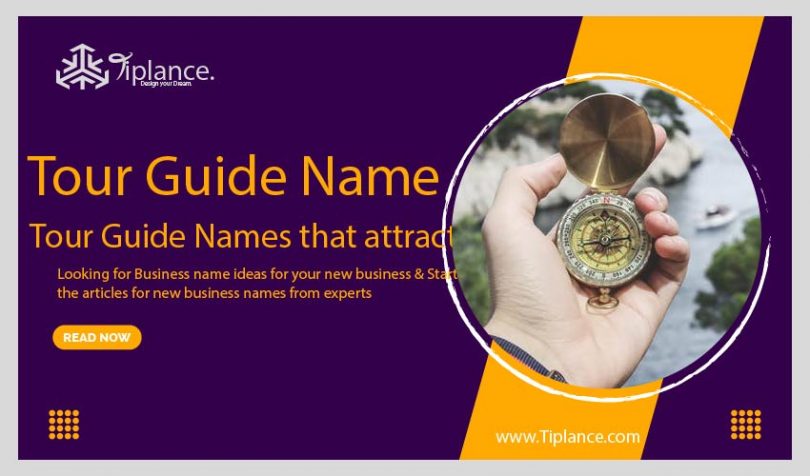
Looking for ways write a Tour Guide Names As a business owner, you know the importance of attracting tourist. They are the lifeblood of your business. Not only do they bring in much-needed revenue, but they also help to create a sense of excitement and adventure for your customers. And what better way to attract tourists than with an exciting name? Below are 15 names that will undoubtedly lure in tourists from all over the world!
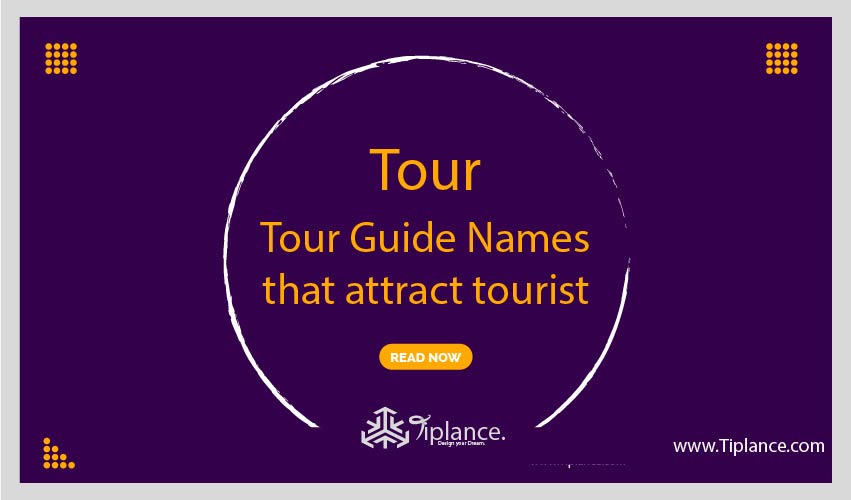
Table of Contents
How Creative Excited Tour Guide Names Ideas Create Impact On Branding & Business.
What’s in a name? For a tour guide, everything! A boring, uninspired name can turn potential customers away before they’ve even stepped foot on your tour. On the other hand, an exciting, creative name can help you stand out from the competition and attract attention.
Think about it this way: when you’re planning a vacation, what’s more likely to catch your eye – “The experience of a lifetime!” or “ABC Tours”? The answer is obvious. A creative, enthusiastic name implies that the tour will be fun and memorable, while a bland, generic name does nothing to inspire confidence.
So how can you come up with a great tour guide name that will make an impact on your branding and business? Here are a few ideas to get you started:
- Use puns or plays on words: Puns are always popular, and they can be a great way to attract attention to your tour. For example, if you’re leading a food tour through Italy, you could call it “A Slice of Heaven.”
- evoke emotion: A good name should evoke some sort of emotion in potential customers. For example, if you’re leading a tour of historical sites
Related: How To Choose a Business Name That Makes Your Company a Brand.
5 Things To Add When Creating Business Names for Instagram?
If you’re looking for business names for Instagram, here are five things to keep in mind!
- Keep it short and sweet: A business name doesn’t need to be overly long or complicated. In fact, shorter names are often easier to remember and can be more successful on social media platforms like Instagram. 2.Make it unique: With so many businesses out there, it’s important to make yours stand out from the crowd. A unique name will help you do just that!
- Use keywords: If you want your business to show up in search results, using relevant keywords in your name is a great way to make that happen.
- Avoid using numbers or special characters: While they may look cool, numbers and special characters can actually make it harder for people to find your account. 5.Pick a name that reflects your brand: Your business name should give people a good idea of what you’re all about. If you sell products related to travel, for example, a name like “Excited Tour Guide” would be perfect! following these tips, you’ll be sure to come up with a winning business name for Instagram in no time!
Excited Tour Guide Names Ideas from United States.
As an excited tour guide, I always love to share the best of the United States with my tour groups. From the majestic beauty of the Grand Canyon to the fascinating history of Boston, there is so much to explore in this great country. And of course, no trip to the United States would be complete without a visit to one of its many iconic landmarks. To help my fellow travelers plan their perfect trip, I’ve compiled a list of my top five favorite places to see in the United States.
- The Grand Canyon – There is simply no other place on earth quite like the Grand Canyon. This natural wonder of the world never fails to take my breath away.
- Boston – A visit to Boston is like taking a step back in time. This historic city is full of charm and character.
- Yellowstone National Park – Yellowstone is one of the most beautiful places on earth. From its stunning waterfalls to its abundant wildlife, there is something for everyone to enjoy.
- The Statue of Liberty – The Statue of Liberty is an icon of freedom and democracy. Standing tall in New York Harbor, she is a sight that never fails to inspire.
Related: 115 Tourism Company Name ideas to get more booking
Excited Tour Guide Names Ideas from Australia.
When it comes to excited tour guides, no one does it better than the ones from the United States. They have a way of making even the most mundane places sound interesting and exciting. Here are some of their best ideas:
- The world’s largest ball of twine
- A real life ‘Field of Dreams’
- The world’s largest frying pan
- The largest collection of Pez dispensers
- The largest collection of history museums
- And much more!
No matter what your interests are, there is sure to be an excited tour guide who can show you an amazing time in the United States.
Excited Tour Guide Name Ideas from United Kingdom.
If you’re looking for an exciting name for your tour guide business, why not consider some options from the United Kingdom? After all, there’s no shortage of interesting places to see and things to do in this country! Here are just a few ideas to get you started:
- “The London Experience”: A tour guide business that offers sightseeing tours of England’s capital city.
- “Wells & Somerset”: A tour guide company specializing in trips to the picturesque countryside of southwestern England.
- “The Scottish Highlands”: A tour guide firm that takes visitors on trips through the rugged and beautiful landscape of Scotland.
- “The Heart of England”: A tour guide service based in the Midlands region of England, offering tours of historic towns and cities such as Birmingham, Nottingham, and Leicester.
Whatever name you choose for your business, make sure it reflects your enthusiasm for showing visitors around the United Kingdom!
Related: 189+ Creative Tour and Travel Agency Name Ideas Suggestion [Updated]
Professional Tour Guide Names Ideas & Example.
- Tour Guide Extraordinaire
- Your Friendly Neighborhood Tour Guide
- The wanderlust Tour Guide
- Tour de force Tour Guide Service
- Rack up the Miles Tour Guides
- On the Road Again Tour Guides
- All About the Journey Tour Guides
- Footprints in Time Tour Guides
- Around the World in
- Days Tour Guides
- Past, Present, and Future Tour Guides
- Bella Italia! Tour Guides
- “I Love NY” Tour Guide
- “Laissez les bones teem
- Wanderlust Tours
- Explorer Travel
- Discovery Touring
- Adventure Guides
- Getaway Tours
- Journey Journeys
- Escapes Travel
- Dream Vacations
- Trekking Tours
- Safari Guides
- Nature Walks
- City Dreams
- Cultural Connections
- gastro tours
- heritage walks
- nightlife explorations
- shopping adventures
- family fun outings
- group getaways
- VIP packages
Related: 231+ Catchy Shopping Center Names Ideas
Tour Guide Company Names
Tour guiding can be a very rewarding job. Not only do you get to share your love of history and culture with others, but you also get to help them experience new places. If you’re thinking of starting your own tour guide company, one of the first things you’ll need to do is come up with a catchy name. Here are 21 Tour Guide Company Names ideas to help get you started:
- Around the World Tours
- Explorer Tour Company
- Tour de Force Touring Company
- 5 Star Tour Guides
- A Cut Above Touring Company
- Tour de Luxe Touring Company
- [email protected]
- Perfect Day Touring Company
- Dream Vacations Touring Company
- [email protected]
- All About America Tours
- Coast to Coast Touring Company
- Visit Every State Touring Company
- Bucket List Tours
- Unforgettable Touring Company
- Majestic Touring Company
- Distinctive Touring Company
- Wondrous Touring Company
- Outstanding Touring Company
- Premier Tour
- Bella Tour Guides
- Tour de Force
- Tour with gusto
- On Point Tour Guides
- Tour Titans
- Tour Guide Pros
- The Touring Company
- Touring Wonders
- Let’s Tour!
- The Tour Connection
- Guided Tours & More
- All About Tours
- Perfectly Proportioned Tours
- Minute Tours
- Just the Highlights Tour Company
- Grand Tour Guides
- Superior Tours
- The A-List Tour Guides
- Walking Wounded Tours Happy naming!
Related: 61 Catchy Restaurant Slogans and taglines to Sell More
Museum Tour Guide Name
Tour guide are the face of any museum. Tour guide names should be reflective of the institution’s values and mission. They should also be catchy, so that potential visitors remember the name and are more likely to visit. Here are 21 museum tour guide names ideas to get you started:
- The History Buffs
- The Art Aficionados
- The Culture Vultures
- The Thinkers & The Doers
- The makers & The creators
- Love Thy Neighbor
- Think Outside The Box
- Tour De Force
- Museum Musings
- The Hidden Gems
- Up & Coming
- On The Rise
- Breaking Boundaries
- Faces of The Future
- The Innovators
- Adrianne Art Tour Guide
- Bob the Museum Tour Guide
- Canyonlands Tour Guide
- Chicago Tour Guide
- Dave the Dinosaur Tour Guide
- Evanston Tour Guide
- Frankfurt Tour Guide
- Gary the Gargoyle Tour Guide
- Hollywood Tour Guide
- Istanbul Tour Guide
- Joan of Arc Tour Guide 12. Kush Tour Guide
- Lisa the Llama Tour Guide
- Madrid Tour Guide
- New Orleans Tour Guide
- Olympus Tour Guide
- Petra Tour Guide
- Rome Tour Guide
- The Sphinx TourGuide
- Stonehenge Tour Guide
- Venice Tour Guide
- [Institution Name] Insiders
- [City/Region/Country] Tour Guides
- [Museum/Institution] Elixir
- [Museum/Institution] Energizers
- [Museum/Institution] Enthusiasts
- [Museum/Institution] Evangelists
Complete Step by Step guide to create a business name in just 2 Hours.
Are you looking to start a business, but don’t know where to begin? Naming your business can seem like a daunting task, but it doesn’t have to be! Follow our simple, step-by-step guide and you’ll have a great name for your new business in no time.
The first step is to brainstorm. Write down any and all ideas that come to mind, no matter how crazy they may seem. The goal at this stage is simply to get all of your ideas out there. Once you have a good list going, you can start narrowing things down.
Next, consider what type of name would be most appropriate for your business. If you’re selling products or services that are fun and unique, you’ll want a name that reflects that. On the other hand, if you’re providing a more serious or traditional service, a more straightforward name may be better suited.
Once you’ve narrowed things down to a few favorites, it’s time to start checking availability. Make sure the domain name is available and that there aren’t already too many businesses with a similar name. You also want to make sure the name isn’t too long or difficult to pronounce.
Important factors to naming your Excited Tour Guide as a Brand.
Tour guide businesses are a dime a dozen. So, how do you make yours stand out from the rest? By creating a brand that is unique, memorable, and exciting! Here are a few factors to consider when naming your Tour Guide business:
First and foremost, your Tour Guide business name should be reflective of the type of tours you offer. Are you a history buff who specializes in walking tours of ancient ruins? Or are you more of an adrenaline junkie who offers biking and hiking tours through beautiful landscapes? Consider what makes your tours special and use that to inform your business name.
Secondly, you’ll want to choose a name that is easy to remember and pronounce. After all, you want your potential customers to be able to find you when they’re searching for a tour guide! Steer clear of convoluted names or inside jokes that only you and your friends will understand.
Finally, don’t be afraid to have some fun with your Tour Guide business name! This is your chance to be creative and really put your personal stamp on your brand. So go ahead and brainstorm those pun-tastic names or play around with alliteration – whatever inspires you! Just make sure that your name reflects the excitement and adventure that

What kind of Excited Tour Guide Name Suits you.
Tour guide businesses are a dime a dozen, but what sets each one apart is the kind of experience that they offer. If you’re looking for an Excited Tour Guide who can show you the ropes and get you pumped up for your adventure, then look no further than Tour Guide Business name.
We’re all about providing an exhilarating experience, and we’ll make sure that you see everything that your destination has to offer. From ziplining through the jungle to whitewater rafting down a raging river, we’ll make sure that you have the time of your life. So whether you’re looking for an extreme adventure or just a fun-filled day, Tour Guide Business name is the perfect choice for you.
Check the Availability of Your Excited Tour Guide Names.
Tour guiding can be a very rewarding career. You get to share your knowledge and excitement about a certain topic with others, and you get to help people learn more about the world around them. However, before you can start your tour guide business, you need to make sure that your chosen name is available.
The last thing you want is to spend months planning your business only to find out that someone else is already using the name you wanted. Checking the availability of your chosen tour guide business name is a simple process that can save you a lot of time and headache down the road.
Test & Review your Excited Tour Guide Name Ideas.
So you’ve decided to start a tour guide business. Congratulations! This is an excellent way to share your love of (location) with others and help them create lasting memories. But before you can start sharing your knowledge with the world, you need to choose a name for your business. This can be a daunting task, but luckily, we’re here to help.
To start, think about what kind of tours you want to offer. Are you going to focus on history, art, food, or something else? Once you’ve decided on a niche, try to come up with a name that reflects your specialty. For example, if you’re passionate about the art scene in your city, you could consider something like “Artful Touring.”
Next, make sure that your name is easy to pronounce and spell. You don’t want potential customers to get frustrated when trying to find your website or business card. And lastly, try to choose a name that’s unique and memorable. After all, you want people to recommend your tours to their friends and family!
If you’re still stuck, take a look at our list of Tour Guide Business names below. We’ve included a mix of well-known companies as well
Some Final Thoughts:
So what can your business do to create names that attract tourists? First, start by looking at what other destinations are doing. Try to find a unique selling proposition for your city or town and focus on creating a name that reflects that. Be sure to keep the tone of your marketing materials professional and engaging – you want potential tourists to feel excited about visiting your destination!
Finally, always test and measure how different names perform against each other. By using the principles of neuromarketing, you can create tourism-friendly names that help bring in more visitors and boost your bottom line. Have you tried any of these techniques for naming your tourist attraction? Let us know in the comments below!
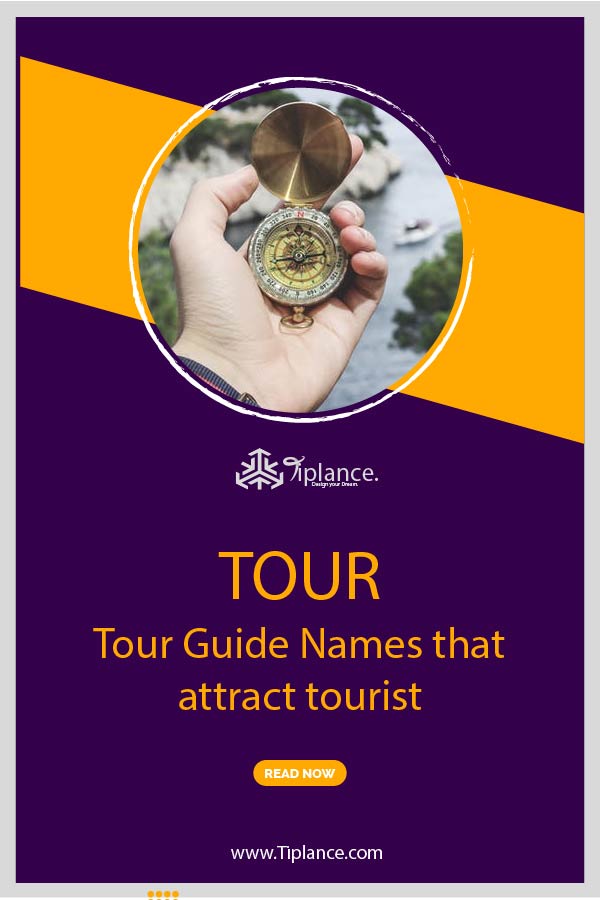
You may also like

131+ Powerful Import & Export Company Names

299 + Powerful Coupon Names Ideas & Example

131+ Creative Ebay Store Names that are available.

275+ Creative Sticker Business Name Ideas &...

295 + Popular Property management names Ideas &...

405+ Powerful Family Business Names that make you a...
About the author.
Danish Ali Founder & CEO of Tiplance.com. He Helps Entrepreneur Startups & Small Business Owner To Find the Right Path.
Leave a Comment X

Art & Culture Travel Blog
How to visit the museum: a guide for the perfect museum visit.
- Tea Gudek Šnajdar
- Museum Tips

Museums are some of the most popular tourist attractions and usually places many travellers wants to visit on their trips. However, the experience of visiting a museum could also be quiet disappointing if not done right, even for the experienced museumgoers. After doing it wrong many times, and then learned how to visit the museums right, I wanted to share with you this guide for a perfect museum visit.
How to visit the museum
There are many ways to visit the museums right. And many more to do it all wrong. It, of course, depends entirely on your interests and the way you love to explore the new places. However, there are some ground rules you should follow if you’d like to know how to visit the museum right.
⤷ Read more : 15 best museums in Europe you should visit
What if you don’t like museums?
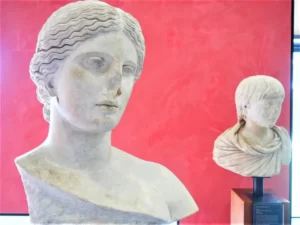
Then don’t visit them! I’m not a massive fan of adrenaline parks, and that’s why I would hardly ever end up in one while travelling.
It’s the same with the museums. Do you feel like you should go and see Mona Lisa if you’re in Paris ? Despite the fact, you don’t really appreciate the painting? Well, don’t! Your experience isn’t going to be the best, you probably won’t like the picture any more, and you’ll lose a few hours you could spend doing something more fun in Paris .
⤷ TIP : But, if you’d like to give museums a chance, then I have a suggestion for you. Book a private tour and let someone who knows that museum very well guide you around. Private museum tours usually last for roughly two hours. The guide will have your ticket sorted, they’ll show you the most interesting exhibits and will tell you some exciting stories about them. Trust me, they know how to visit the museum right.
A guide for the perfect museum visit
However, if you do like art and history, feel like a real culture tourist, then let me give you some tips on how to visit the museum right. I broke them in three steps that will make your museum visit much more enjoyable.
1/ Before a museum visit: How to prepare for a visit to a museum
A good museum visit starts with a well-done preparation. Here are some of my tips.
# – Chose the museum you’d like to visit wisely
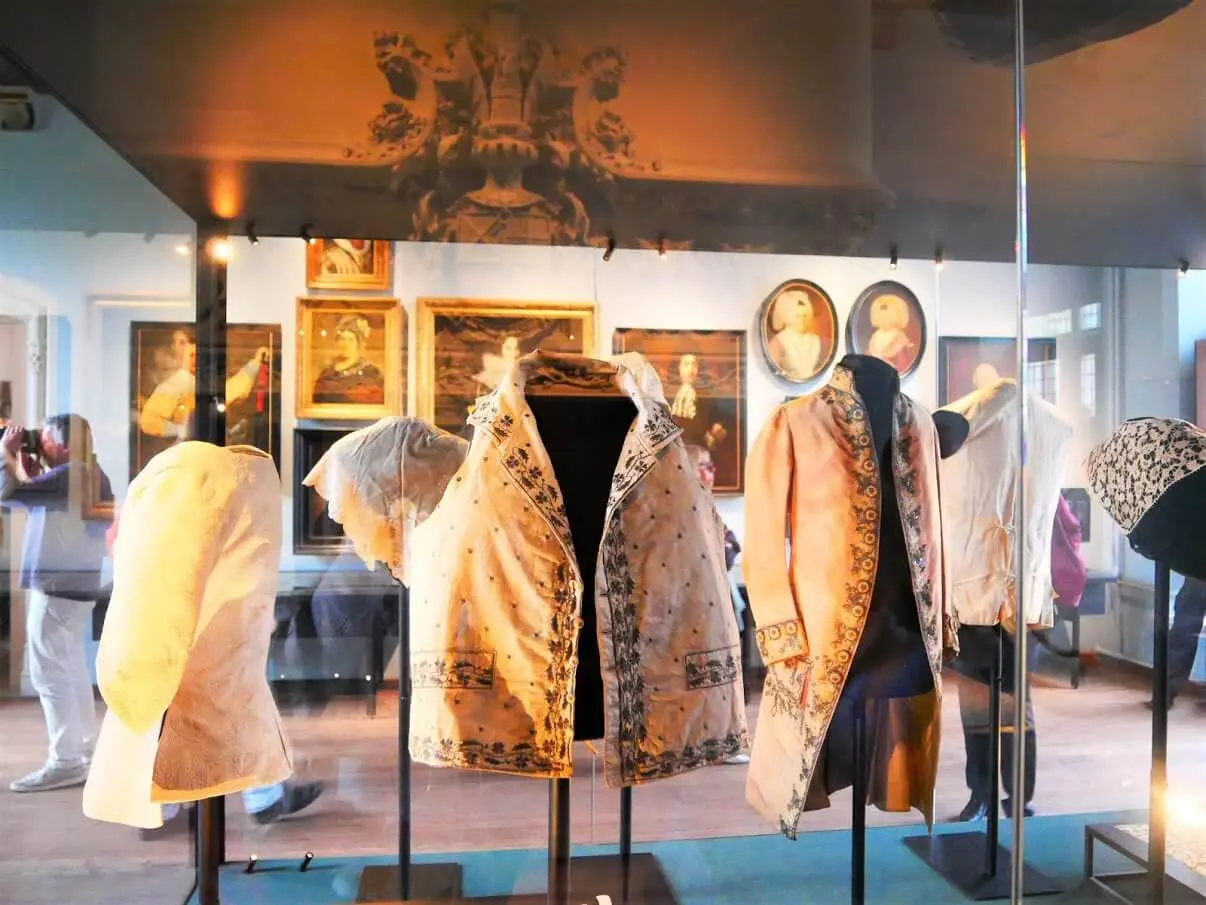
Obviously, we all have different interest. I’d be utterly bored at a museum of sports. But give me an exhibition about fashion, and I’ll be thrilled. You get the point.
If you’re going to a major city that has several museums you could visit, do some research and check which one could be the most interesting to you.
If you love the old masters and are visiting Amsterdam , then the Rijksmuseum is a place to go for you. If you’d like to learn more about Vincent van Gogh during your trip to Europe, then Orsay in Paris or the Van Gogh Museum in the Dutch capital should be on your list.
Researching the best museums according to your interests in a town you’re going to visit, before your trip, is one of my essential tips on how to visit the museum right.
⤷ Read more : Here is a selection of the best museums in Amsterdam , best museums in London , best museums in Paris and best museums in Tournai .
# – Get familiar with the collection it’s home to on their website
Okay, so you’ve chosen the museum or more of them, you’d like to visit.
The next step is to research the museum itself. Visit their website and see what the highlights in it are. Do they host some of the world most famous masterpieces? Or the work of a painter you like? Maybe they have a nice collection of an art style you love? It’s good to check all of that before your trip, so you can plan your museum visit better.
I also love to research the museum website before my visit to see are there any special events taking place during my time there. Temporary exhibitions, lectures or art workshops could be a great way to make your visit even more enjoyable.
In case some art pieces are on loan, or if some galleries are temporarily closed, you’ll know how to plan your museums visit better, too.
# – Check if you could find any videos about that museum
There’s nothing like watching an excellent video about the museum you’re going to before visiting it. You’ll get familiar with the collection and see which art pieces you’d like to see. You’ll also learn a bit about them before actually seeing them.
Watching some museum videos before your visit could also be great to get a feeling of a museum interior a bit.
⤷ TIP : Check out some of Culture Tourist museum videos on a link here to see if I’ve already made some about the place you’re planning to visit.
# – Buy your ticket online
There is nothing worse than staring your visit by queuing in front of the museum for a few hours just to get in. And that’s the sad reality when visiting many of those world-famous museums.
However, be smart and purchase your museum ticket online before your visit. You can often do that on the museum website. Or, you can do as I do, and use the platform called Tiqets (here is the link) to buy all of your museum tickets online.
That way you can go straight to the entrance and get into the museum immediately.
# – Book a museum tour
Visiting a museum on a guided tour makes a huge difference. Especially if it’s a private tour. I used to work as a museum guide for several years and speak from the experience here.
And even though I have a MA in Art History, I always book a tour when visiting a new museum. A good guide is going to tell you about the museum, its collection and will tell you the stories behind some of its highlights in a fun and exciting way. You’ll also get a chance to ask all the questions you have.
⤷ TIP : You’ll find a wide selection of museum tours on a link here – this is where I’m usually booking all of my museum tours.
2/ During the museum visit: How to get the most of your visit to a museum
Okay, so you’ve prepared well for your visit in advance. But, let’s talk now about how to visit the museum right once inside of it.
# – Dress appropriately

This is quite an important advice for visiting museums.
Let’s start with your shoes first. When in the museum you won’t walk that much, but you’ll stand on the same spot a lot. And that could be tiring. Wearing some comfy shoes is definitely crucial for a great museum experience.
Many exhibits are fragile and to prevent their decline, museums have a special cooling system in their interiors. That’s why it’s always a bit fresh at the galleries. So, my advice is to bring a cardigan to put it on when inside.
# – Don’t spend more than two hours at a museum
From my experience, after two hours at the museum, you’ll be too tired to continue exploring it.
That’s why the step of researching the museum collection before your visit is so important. Getting in a museum and just wandering around without any idea of what you’re looking at, won’t be the best experience.
To really enjoy the artworks, learn the story behind them and have a great museum experience, pick only one collection and explore it extensively.
If you’re at the Rijksmuseum in Amsterdam , spend your time just at the Gallery of Honour. Or, if at the Orsay in Paris, explore only the Impressionist collection . That’s what I usually do, and it makes such a difference, trust me.
# – Focus on details rather than trying to see more

This museum tip is related to the previous one. Rather than trying to see as much as you can at the museum, put your focus on details. Art is all about the feelings it evokes in us. And to get the chance to feel the paintings, focus on details.
Stand in front of the painting and see if you can notice the brushstrokes or a texture artist has painted. How does the frame look like? Is it new or old? You can also get very close to the painting and look to the colours, texture and details. And then take a few steps back and look at it from the distance to see how the whole composition changes.
Pick a few paintings and explore them in this way, and I’m sure your museum experience is going to be much more interesting than usual.
# – Ask questions
One of my favourite things about visiting museums is to talk about the art pieces. If you’ll visit the museum on tour feel free to ask your guide all the questions you have. Why is that painting so famous? How long would an artist need to create a marble statue? Use the advantage of having an expert with you and ask everything that interests you.
If you’re going to visit on your own, you can always ask the museum guards to advise you which part of the museum to explore next. Or even about some exhibits. They usually know a lot about the collections they are taking care of.
And also, discuss the art with your travel companions. Is there something you didn’t like at all? Talk about that! Art is a subjective thing, and it should be discussed. Remember me mentioning how art is all about the feelings it evokes in us? Well, those feelings could be happy, sad, angry or even confusing. And it’s fun to see how the person you’re with perceived the same art piece.
# – Avoid taking pictures
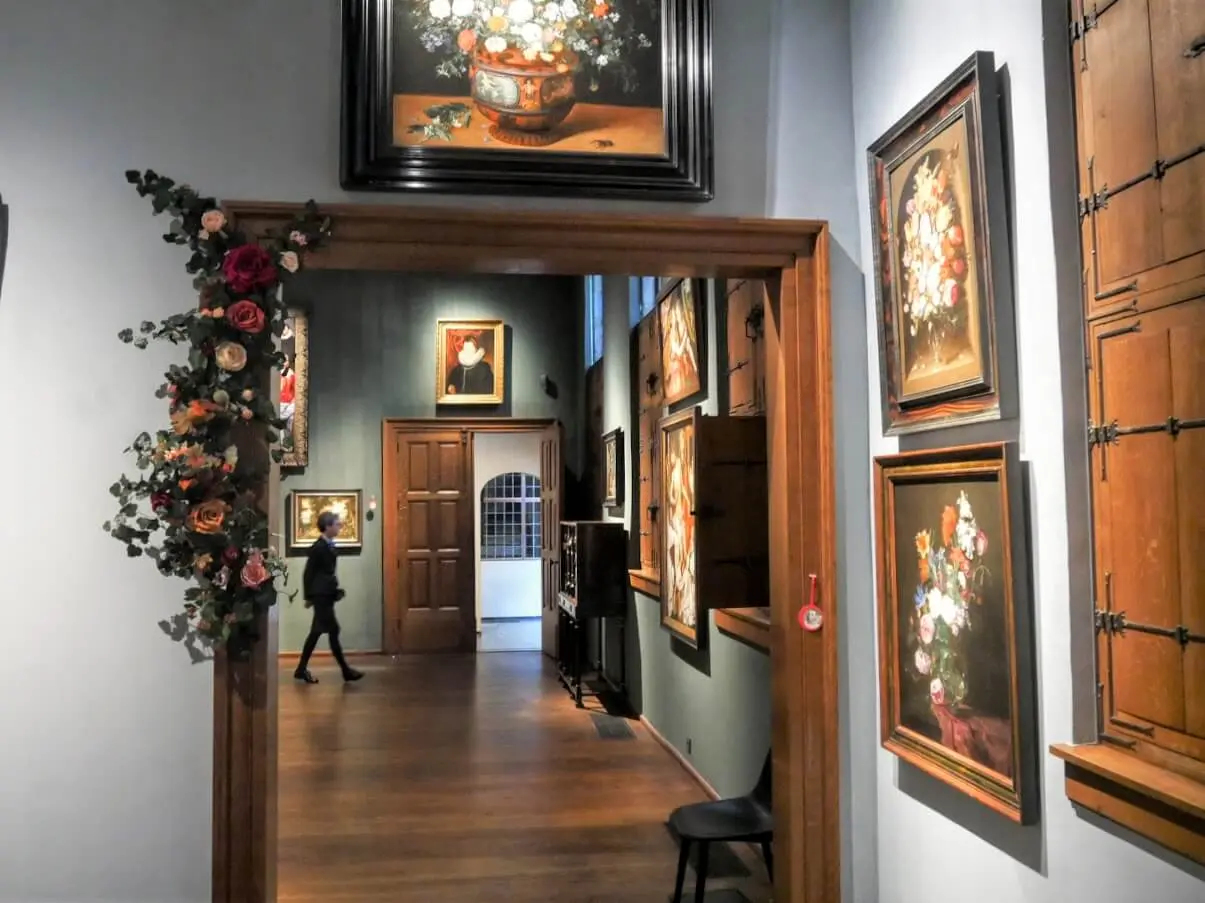
Lose the phone when at the museum!
Museums are places to enjoy at a slow pace. That way, they transfer you to some different world. And although some exhibits could be so beautiful and interesting to you, don’t take photos of them.
First, if using the flash, you’re damaging the paintings that are often hundreds of years old. And since the light is often dim at museums, the quality of your photos won’t be the best.
Museum shops are selling the postcards with the majority of the artworks they host, so you can keep the memory to it in that way. And very often, you can find great high-quality photos of the paintings on their website.
Another thing is that you are ruining the experience to other visitors who are trying to enjoy in those exhibits. And are ruining the experience to yourself, too. So, lose the phone and enjoy a wonderful relaxed museum visit.
3/ After the museum visit: What to do after visiting the museum
So, you enjoyed visiting the galleries and exploring the artworks. But what to do now to enjoy your visit a bit longer?
# – Have a coffee at a museum cafe
Although there are different opinions about them, I love to finish my visit at a museum cafe. I don’t know is it because of a couple of hours of walking, being a bit overwhelmed by all that art, or just because they usually have a beautiful setting, I love to spend a bit more time at a museum cafe after my visit.
# – Take some time off to absorb everything you saw
Having a break at a museum cafe also allows some time to absorb everything you saw at the galleries.
If you’re alone, you can browse through the flyer or a museum booklet you’ve got and keep that feeling of fulfilment with art for a few more moments. Or if you’re in a company, you can talk about your favourite art pieces or the ones you didn’t like/understood at all.
# – Visit the museum shop
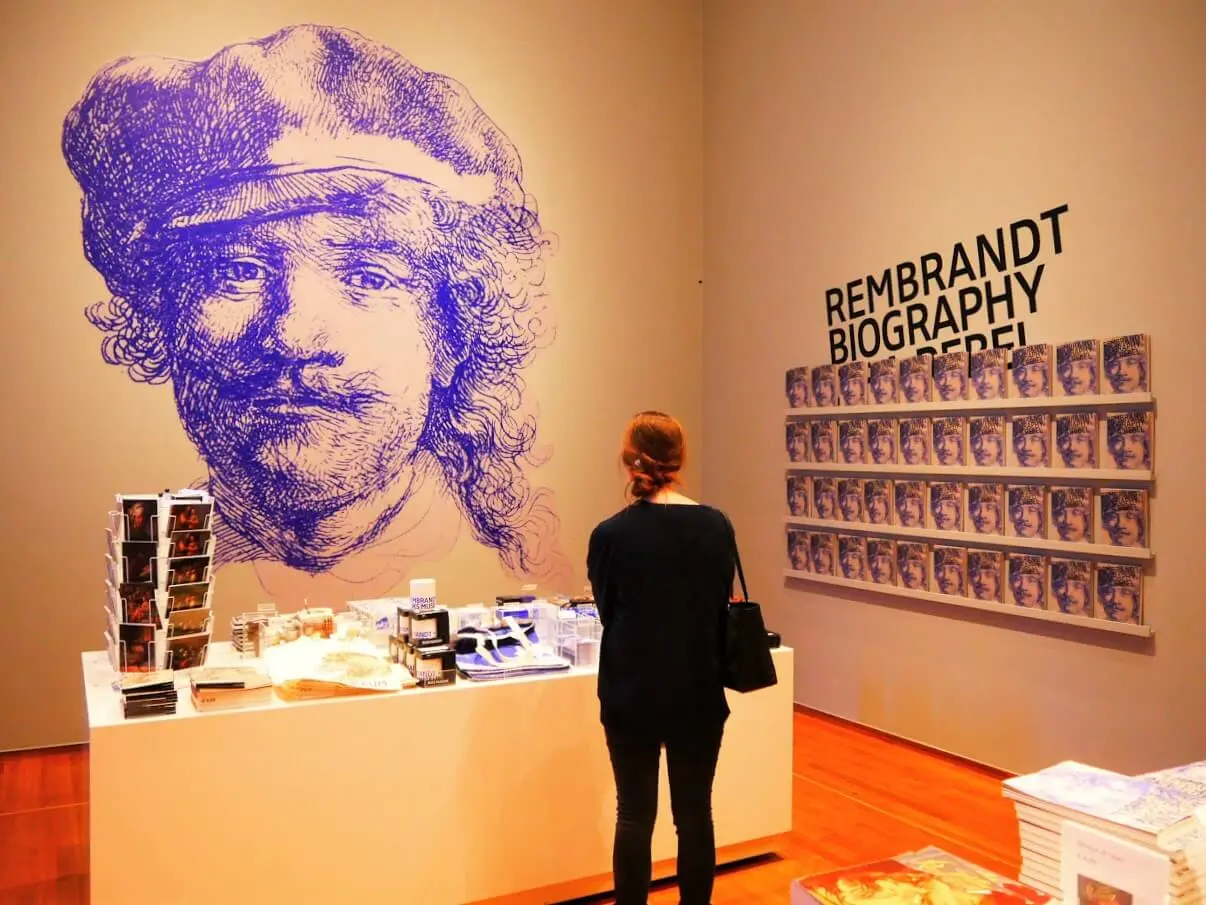
There are mixed opinions about them, too. But, I love visiting museum shops at the end of my visit. It’s a nice way to get something to remember the museum and the art you saw there. Perhaps, you could buy those postcards or reproductions of the paintings you liked the most.
I also love the art books selection they have and am always looking for some new editions to add to my collection.
They are also a nice place to look for some lovely local designs products. Museums in London have a great selection of them. And I really love some design products you can find at the Stedelijk Museum in Amsterdam .
# – Read a book or watch a movie about something that you liked the most
If you were entirely amazed by some painter or an art movement you saw during your visit to the museum, check out if you can find a book or a movie about it. There are many great fiction books about the old masters and some lovely documentaries about Impressionism. If you liked the work of Vincent van Gogh, you can read more about the life and work of Vincent van Gogh in my series of articles here.
Visiting a new museum could be a bit challenging at first, but good preparation for your museum visit is key. I hope this guide for a perfect museum visit will help you in organising your trip and understanding how to visit the museum right.
Do you have any other tips for visiting museums? Share them with me in the comments!
*This post includes some affiliate links.
How to visit the museum , Museum Guide , Museums
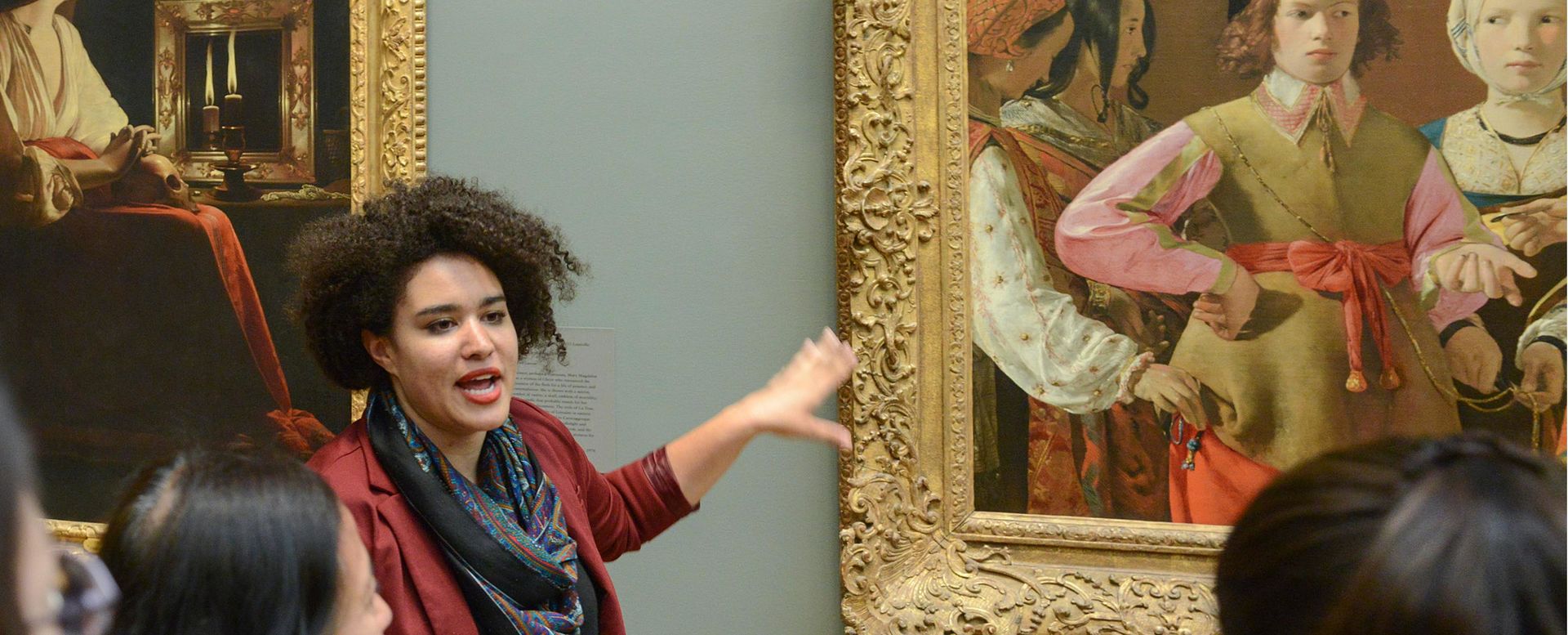
Explore the vast world of art and culture through the lens of various viewpoints in programs ranging from gallery tours to storytelling sessions and interactive experiences with works of art.
MetTours connects you with works of art, with curators, conservators, educators, and artists alike guiding you through the collection and exhibitions. Program times, audiences, and topics vary.

Conversations with ...
Join curators, conservators, and educators for lively, 30-minute dialogues on works of art.
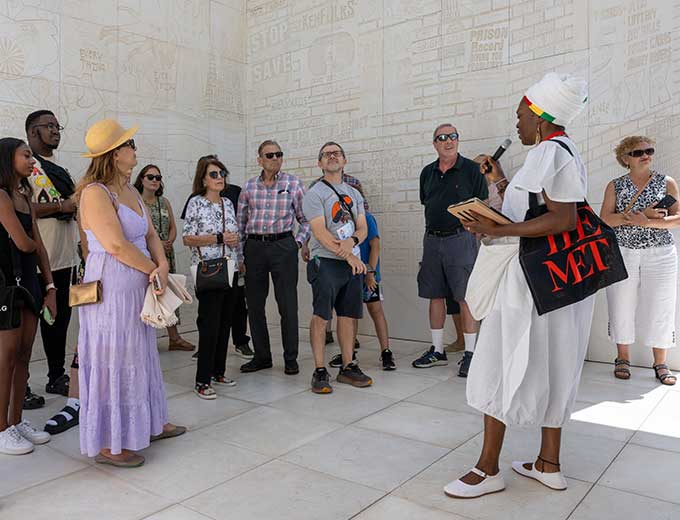
Met Expert Talks
Hear new insights and untold stories from Met insiders, including curators, conservators, scientists, and scholars, and take a closer look at the works of art in the galleries. You’ll also have the opportunity to ask questions.
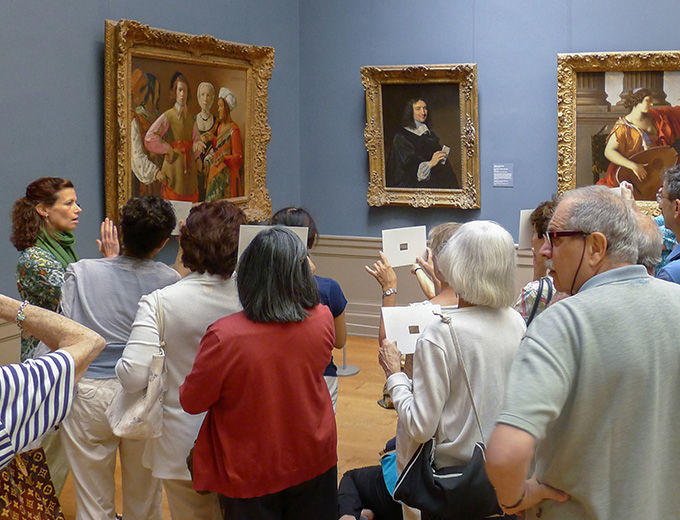
Gallery Talks
Engage directly with works of art in the galleries through talks led by curators, conservators, educators, and invited specialists. Talks focus on specific aspects of the collection or on exhibitions.
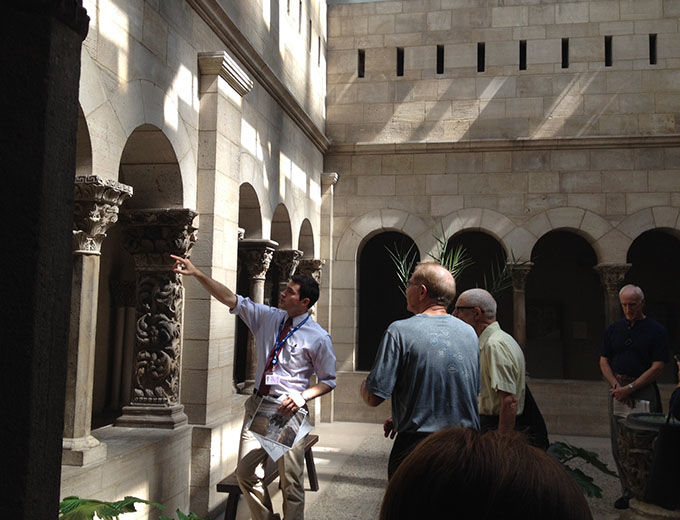
Gallery Talks at The Met Cloisters
The Met Cloisters offers gallery talks for adults at 12 and 2 pm every Saturday and on the first Sunday of each month, year-round.

Guided Tours
Explore highlights of the collection through a variety of tours with Museum-trained volunteers. Engaging, hour-long tours are given in English, French, German, Italian, Japanese, Korean, Mandarin, Portuguese, Russian, and Spanish.
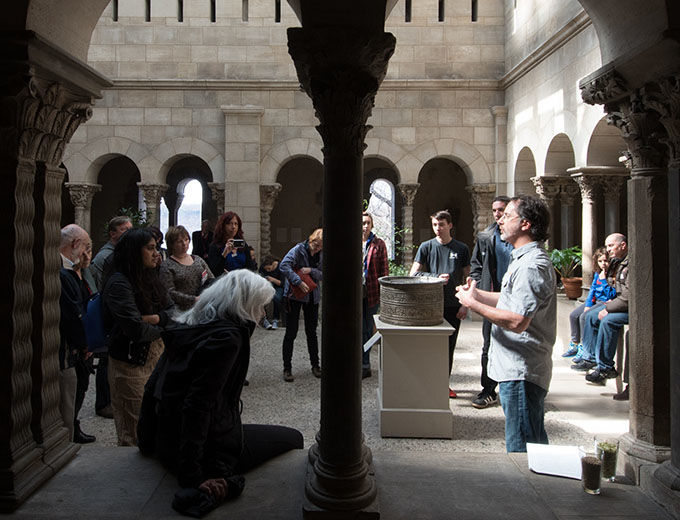
Guided Tours at The Met Cloisters
Explore the building and grounds at The Met Cloisters in tours led by Museum lecturers.
With Met experts, participate in timely and candid conversations that explore shifting perspectives on works from The Met collection.
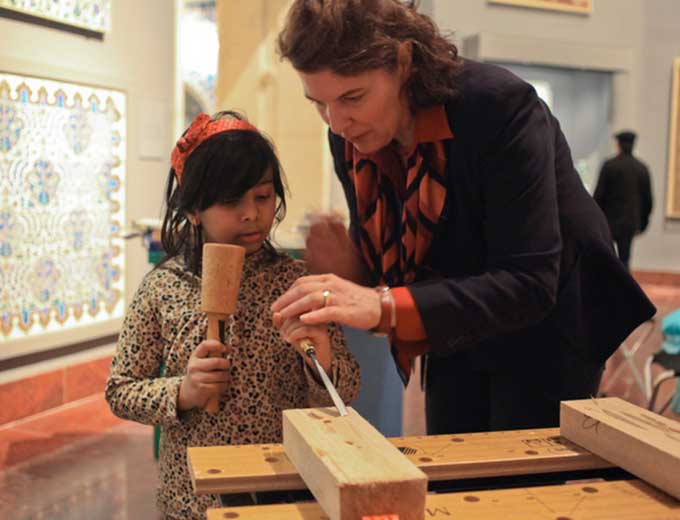
How Did They Do That?
Peek at technique and learn how works of art were created through handling tools and materials. Stop by for hands-on demonstrations and conversations with educators, conservators, artists, and more!
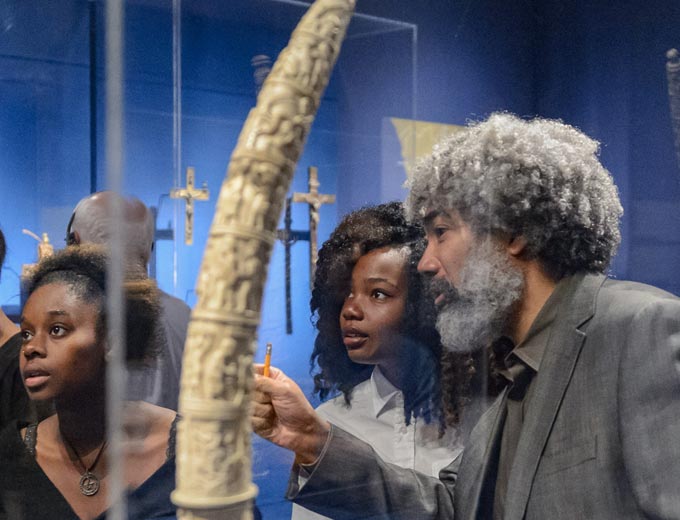
Artists on Artworks
See The Met collection through artists' eyes. Each artist discusses works of art in the collection that hold personal meaning or relevance to his or her artistic process.
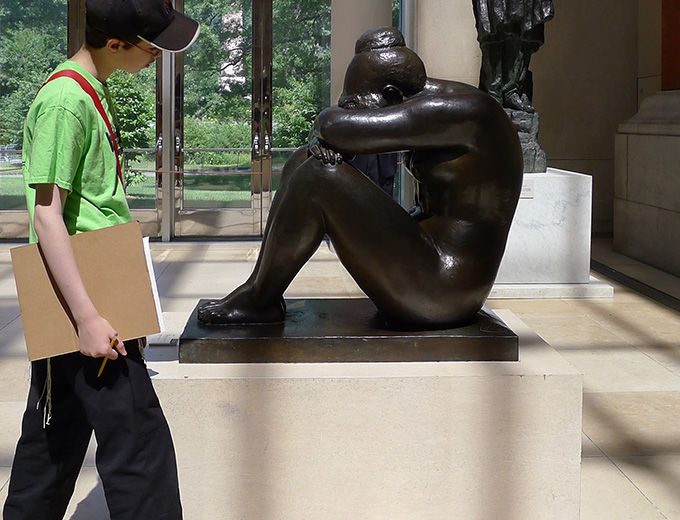
Art Explore (Ages 12–14)
Discover works of art from around the world and make art inspired by your ideas and The Met collection. Attend one or all of the monthly sessions.
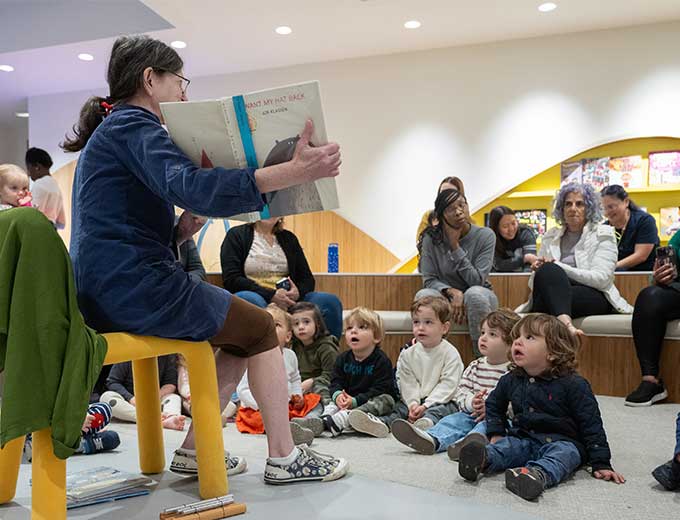
Families with children ages 18 months–6 years are invited to look, listen, sing, and have fun with picture books.
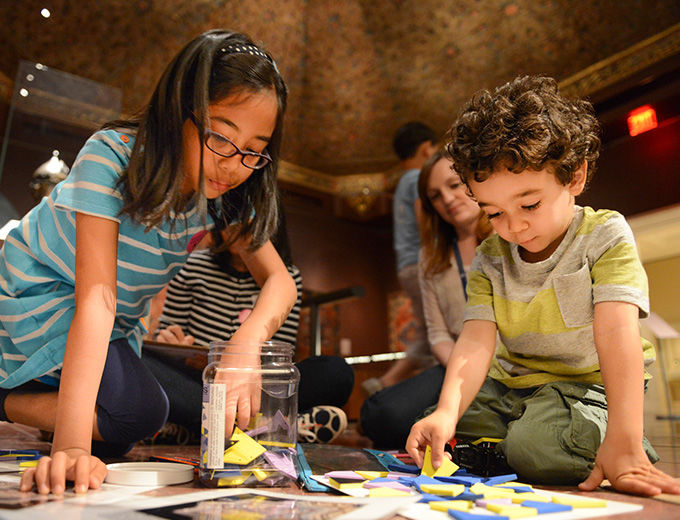
Start with Art at The Met/Start with Art and Music
Families with children ages 3–6 are invited to share ideas and enjoy stories, sketching, singing, and other gallery activities that bring works of art to life.
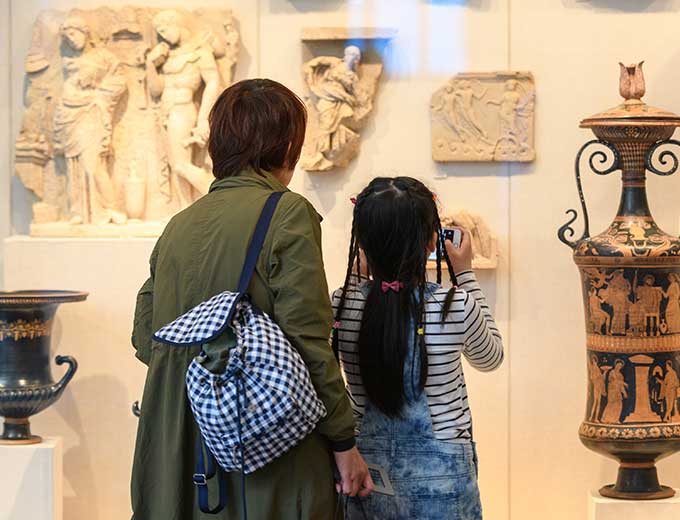
Families with children ages 7–11 are invited to travel through time and around the world on a Museum adventure.
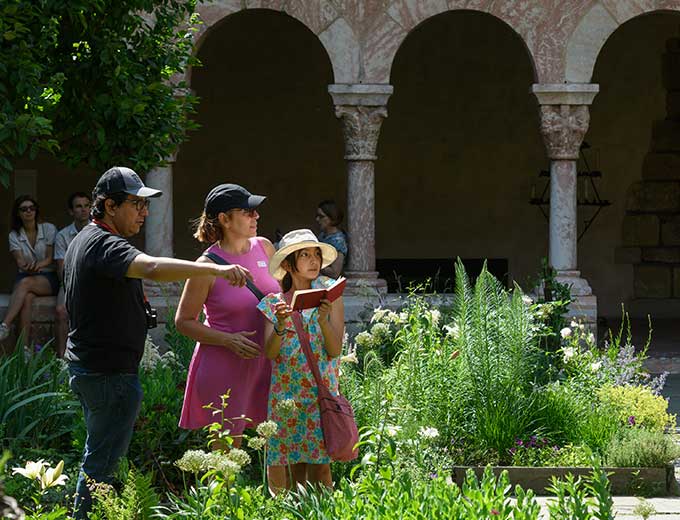
La Experiencia Medieval: Talleres Bilingües y Educativos para Familias
Niños de 4 a 12 años de edad y sus familias están invitados a participar en visitas guiadas y proyectos de arte en Los Claustros.
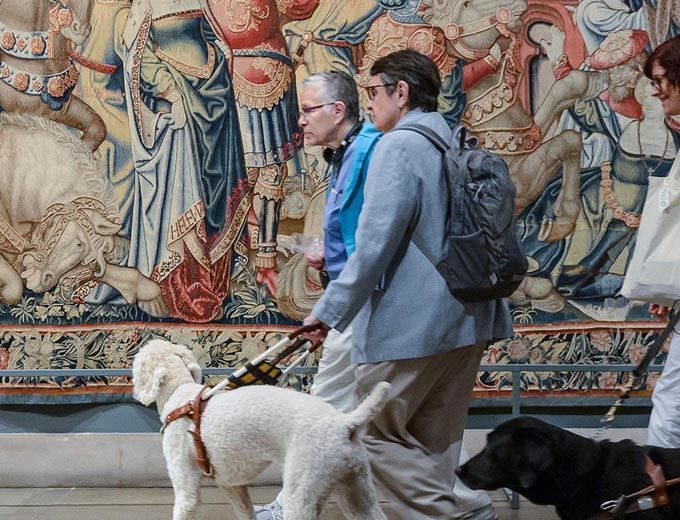
MetTours for Visitors with Disabilities
Join gallery tours and interactive experiences with works of art during these programs specifically designed for people with disabilities together with family and friends.
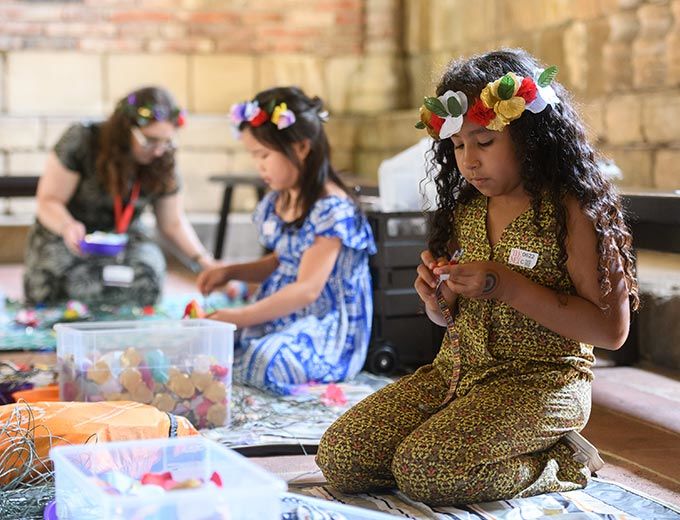
Family Tours at The Met Cloisters
Children ages 4 through 12 and their families are invited for an hour-long workshop at The Met Cloisters.
Upcoming MetTours Events
Storytime at the met—asian american and pacific islander arts and culture, storytime at the met cloisters, met escapes—the roof garden commission: petrit halilaj, abetare.
6 Tips to Creating a Memorable Museum Tour for Children
Tour guide chidera ifechukwu shares on how she gets children to love art., yemisi shyllon museum of art, pan-atlantic university, education is at the heart of the ysma.
Education is central to our mission at the Yemisi Shyllon Museum of Art and we do this through various engaging activities. Tour guide Chidera Ifechukwu gives tours to school children, and here are her 6 tips to making memorable tours.
Gallery Original Source: Yemisi Shyllon Museum of Art
#1: Be an art expert
You must be ready to answer every question that the kids throw at you. 'What is this?’, 'Why this?', ‘How did the artist do this?’, ‘Why is he dancing while she is lying on the floor?’ or ‘Why does his face look funny? Your answers should be handy.
Invisible Hands exhibition poster Original Source: Yemisi Shyllon Museum of Art
#2: Tell captivating stories
Craft and dramatize a story around your artworks. Storytelling is believed to be one of the greatest assets in catching the interest of children. Storytelling simplifies the narratives behind the artworks and brings it to life in such a way that the artwork arouses a sense of wonder in children.
Untitled (2010) by Kunle Adegborioye Original Source: Yemisi Shyllon Museum of Art
#3: Bring in real life examples
If your words are not simple enough, you’ve lost their attention. What works for an adult could be too much for a child. You must be able to relate the artwork to things and events that they can comprehend.
Untitled (2009) by Dele Jegede Yemisi Shyllon Museum of Art, Pan-Atlantic University
#4: How does it make you feel?
Don’t get lost in your facts; you’ll end up having noisy children. Renew their wonder at short intervals and you won’t hear a sound from them. Keep them engaged by asking them about themselves from time to time, or about what they’ve loved about the museum.
Transcient Encounters (2008) by Tola Wewe Original Source: Yemisi Shyllon Museum of Art
#5: Be patient
Patience is your ticket to a happy child. A rolling amount of questions can be frustrating, especially if you’re trying to keep to time on a guided tour. Acknowledge their questions, and reassure them that you will attend to their curiosity while you keep to the programme.
The People of Hope (2000) by Jimoh Buraimoh Original Source: Yemisi Shyllon Museum of Art
#6: After activities
Always have an after-activity for the children, however small it is. The ability of a child to recall even one aspect of the tour could be an accomplishment and the activities give you the opportunity to discover their interests. Crayons and paper work wonders.
Tour The Yemisi Shyllon Museum of Art
7 highlights at the yemisi shyllon museum, prince yemisi shyllon: championing nigerian art, bruce onobrakpeya's rebellion, art within art: an architectural tour of the yemisi shyllon museum of art, ben enwonwu: 17 facts you need to know about one of africa's most important artists, nike davies-okundaye's 'cycle of life', ben osaghae's 'miracle for sale', lamidi fakeye: exploring yoruba mythology through art, kolade oshinowo's 'nomads'.
- An Ordinary Man, His Extraordinary Journey
- Hours/Admission
- Nearby Dining and Lodging
- Information
- Library Collections
- Online Collections
- Photographs
- Harry S. Truman Papers
- Federal Records
- Personal Papers
- Appointment Calendar
- Audiovisual Materials Collection
- President Harry S. Truman's Cabinet
- President Harry S. Truman's White House Staff
- Researching Our Holdings
- Collection Policy and Donating Materials
- Truman Family Genealogy
- To Secure These Rights
- Freedom to Serve
- Events and Programs
- Featured programs
- Civics for All of US
- Civil Rights Teacher Workshop
- High School Trivia Contest
- Teacher Lesson Plans
- Truman Library Teacher Conference 2024
- National History Day
- Student Resources
- Truman Library Teachers Conference
- Truman Presidential Inquiries
- Student Research File
- The Truman Footlocker Project
- Truman Trivia
- The White House Decision Center
- Three Branches of Government
- Electing Our Presidents Teacher Workshop
- National History Day Workshops from the National Archives
- Research grants
- Truman Library History
- Contact Staff
- Volunteer Program
- Internships
- Harry S. Truman
- About the Library
Museum Docent/Tour Guide
SUPERVISED BY: Museum Curator (exhibit training), Educational Programs Coordinator (tour training, including schools), Volunteer Coordinator (tour assignments)
PURPOSE OF JOB: Provide a welcoming, hospitable environment and rewarding learning experience to museum visitors through guided tours.
DUTIES MAY INCLUDE BUT ARE NOT LIMITED TO:
- Conducting museum tours of approximately 1 - 1 1/2 hours in length. Be comfortable speaking to small and large groups of people of all ages.
- Conducting occasional tours, if necessary, of museum and facilities (behind the scenes) for VIPs, special visiting groups, etc.
- Greeting and welcoming tour groups upon their arrival at the Library.
- Dealing skillfully with a variety of visitors under a variety of circumstances.
- Continually keeping informed about changes in museum exhibits.
- Assisting staff at the information desks by providing information to museum visitors and answering their questions about the Harry S. Truman Library & Museum, particularly if your tour is late arriving.
- Assisting, on occasion, with evening special event programs.
- In the event that a tour fails to show up, docents might wander through the exhibition gallier to engage individual visitors and families in impromptu tours or conversations.
- Taking responsibility to find a replacement docent if you cannot give a tour that has been assigned to you. A list of current docents and phone numbers is provided to all docents. Tour schedules are completed and docents are assigned tours approximately four weeks in advance. Schedules are then mailed to docents. Docents are required to confirm that they can give the tour(s) they have been assigned.
A minimum commitment of four tours a month for a year is required. Docents are needed for weekday and/or weekend tours. During the summer, in addition to booked tours, public tours are scheduled a month in advance, three every day Monday - Saturday and two on Sundays. Outside of the summer months, booked tours consist of school groups, adult groups, chartered tours, etc.
QUALIFICATIONS NEEDED:
Must be age 21 or older
High School degree
Enjoy meeting and interacting with other people
Personable, outgoing
Reliable, responsible
Extensive prior knowledge of the Truman Presidency is not required, but a prospective docent should have a working knowledge of American history and a desire to learn
Capable of learning new material rapidly and willing to invest time and expend the effort necessary to study material on the Truman Administration and the Truman Library
Able to work independently
Attend a 6-8 week training program
Able to accept supervision
Able to speak comfortably before groups of people
Physically able to lead tours around the museum
Enthusiastic , flexible
TRAINING/ORIENTATION PROVIDED:
Following at least three tours by different tour guides
Viewing several films, including the Charles Guggenheim film being shown in the museum auditorium
Reading material including biographies by McCullough and Hamby
4-5 sessions with the Museum Curator and/or the Educational Programs Coordinator concerning the exhibits, as well as tour and question techniques
Give a sample tour to 4-6 museum visitors accompanied by staff
Docents receive additional training while assisting Visitor Services staff at the museum information counters. This on-the-job training enables docents to learn more about the day-to-day questions that visitors ask.
Total time involved in training is approximately 6-8 weeks.
LOCATION OF JOB:
Harry S. Truman Presidential Library & Museum, Independence, Missouri
VOLUNTEER BENEFITS:
Knowledge about Harry S. Truman, the Library and Museum, and the educational aspects offered to visitors through a variety of programs/exhibits; discount prices in the museum gift shop; invitations to special events; volunteer appreciation programs; free parking; free subscription to "Whistle-Stop," the quarterly newsletter of the Harry S. Truman Library Institute; free admission to the museum for you and your immediate family.
- Yekaterinburg
- Novosibirsk
- Vladivostok

- Tours to Russia
- Practicalities
- Russia in Lists
Rusmania • Deep into Russia
Out of the Centre
Savvino-storozhevsky monastery and museum.

Zvenigorod's most famous sight is the Savvino-Storozhevsky Monastery, which was founded in 1398 by the monk Savva from the Troitse-Sergieva Lavra, at the invitation and with the support of Prince Yury Dmitrievich of Zvenigorod. Savva was later canonised as St Sabbas (Savva) of Storozhev. The monastery late flourished under the reign of Tsar Alexis, who chose the monastery as his family church and often went on pilgrimage there and made lots of donations to it. Most of the monastery’s buildings date from this time. The monastery is heavily fortified with thick walls and six towers, the most impressive of which is the Krasny Tower which also serves as the eastern entrance. The monastery was closed in 1918 and only reopened in 1995. In 1998 Patriarch Alexius II took part in a service to return the relics of St Sabbas to the monastery. Today the monastery has the status of a stauropegic monastery, which is second in status to a lavra. In addition to being a working monastery, it also holds the Zvenigorod Historical, Architectural and Art Museum.
Belfry and Neighbouring Churches

Located near the main entrance is the monastery's belfry which is perhaps the calling card of the monastery due to its uniqueness. It was built in the 1650s and the St Sergius of Radonezh’s Church was opened on the middle tier in the mid-17th century, although it was originally dedicated to the Trinity. The belfry's 35-tonne Great Bladgovestny Bell fell in 1941 and was only restored and returned in 2003. Attached to the belfry is a large refectory and the Transfiguration Church, both of which were built on the orders of Tsar Alexis in the 1650s.

To the left of the belfry is another, smaller, refectory which is attached to the Trinity Gate-Church, which was also constructed in the 1650s on the orders of Tsar Alexis who made it his own family church. The church is elaborately decorated with colourful trims and underneath the archway is a beautiful 19th century fresco.
Nativity of Virgin Mary Cathedral

The Nativity of Virgin Mary Cathedral is the oldest building in the monastery and among the oldest buildings in the Moscow Region. It was built between 1404 and 1405 during the lifetime of St Sabbas and using the funds of Prince Yury of Zvenigorod. The white-stone cathedral is a standard four-pillar design with a single golden dome. After the death of St Sabbas he was interred in the cathedral and a new altar dedicated to him was added.

Under the reign of Tsar Alexis the cathedral was decorated with frescoes by Stepan Ryazanets, some of which remain today. Tsar Alexis also presented the cathedral with a five-tier iconostasis, the top row of icons have been preserved.
Tsaritsa's Chambers

The Nativity of Virgin Mary Cathedral is located between the Tsaritsa's Chambers of the left and the Palace of Tsar Alexis on the right. The Tsaritsa's Chambers were built in the mid-17th century for the wife of Tsar Alexey - Tsaritsa Maria Ilinichna Miloskavskaya. The design of the building is influenced by the ancient Russian architectural style. Is prettier than the Tsar's chambers opposite, being red in colour with elaborately decorated window frames and entrance.

At present the Tsaritsa's Chambers houses the Zvenigorod Historical, Architectural and Art Museum. Among its displays is an accurate recreation of the interior of a noble lady's chambers including furniture, decorations and a decorated tiled oven, and an exhibition on the history of Zvenigorod and the monastery.
Palace of Tsar Alexis

The Palace of Tsar Alexis was built in the 1650s and is now one of the best surviving examples of non-religious architecture of that era. It was built especially for Tsar Alexis who often visited the monastery on religious pilgrimages. Its most striking feature is its pretty row of nine chimney spouts which resemble towers.

Plan your next trip to Russia
Ready-to-book tours.
Your holiday in Russia starts here. Choose and book your tour to Russia.
REQUEST A CUSTOMISED TRIP
Looking for something unique? Create the trip of your dreams with the help of our experts.
ELECTROSTAL HISTORY AND ART MUSEUM: All You Need to Know BEFORE You Go (with Photos)
- (0.19 mi) Elektrostal Hotel
- (1.21 mi) Yakor Hotel
- (1.27 mi) Mini Hotel Banifatsiy
- (1.18 mi) Elemash
- (1.36 mi) Hotel Djaz
- (0.07 mi) Prima Bolshogo
- (0.13 mi) Makecoffee
- (0.25 mi) Amsterdam Moments
- (0.25 mi) Pechka
- (0.26 mi) Mazhor
Zvenigorod Museum of History, Architecture and Art

Most Recent: Reviews ordered by most recent publish date in descending order.
Detailed Reviews: Reviews ordered by recency and descriptiveness of user-identified themes such as wait time, length of visit, general tips, and location information.

Also popular with travelers

Zvenigorod Museum of History, Architecture and Art - All You Need to Know BEFORE You Go (2024)
- (0.07 mi) Apartment In The Forest
- (0.07 mi) Zvenigorodskiy
- (0.07 mi) Podmoskovye
- (0.13 mi) Storozha
- (0.34 mi) Chekhovskaya Dacha
- (0.08 mi) Proviantskaya Bashnya
- (0.07 mi) Chainaya U Skita
- (0.10 mi) Trapeznaya
- (0.44 mi) Restaurant Shale-Hotel Taezhnye Dachi
- (0.78 mi) Zhan Ivan
- (0.04 mi) Savvino-Storozhevsky Monastery
- (0.07 mi) Skeet of Saint Savva
- (0.07 mi) Cathedral of the Nativity of the Theotokos
- (0.78 mi) Horse Farm Dutkovo
- (0.45 mi) Museum Let'sGO

IMAGES
VIDEO
COMMENTS
A museum tour guide is often referred to as a docent or a museum educator. They play a crucial role in enhancing the visitor experience by providing informative and engaging tours of exhibits and collections. These knowledgeable individuals are experts in the history, art, or subject matter of the museum and are able to communicate their ...
How to become a tour guide in a museum You can follow these simple steps to begin your career as a tour guide in a museum: 1. Earn a high school diploma The minimum educational requirement for a museum docent is typically a high school diploma or the global equivalent. 2. Choose a specialty Effective museum tour guides are experts in the field.
Museum Hack leads renegade, guided tours of the world's best museums. We do art tours, history tours, walking tours, city tours and more. Our museum tour guides are experts in the obscure and collectors of amazing hidden stories about the art, objects, artifacts and museum itself. Choose Your City. ⭐⭐⭐⭐⭐ 5400+ Reviews.
The role of the museum docent, tour guide, or interpreter is an essential one. Acting as a bridge between visitors and the exhibition, the docent is the catalyst for learning in the museum. It is the docent who guides visitors on their journeys of discovery, helping them blend what they already know with what they learn on the tour.
Guided tours. Professional art historians are available to provide guided Museum tours of masterworks in MoMA's collection, the Museum's architecture, and current exhibitions. Tours can be customized to focus on specific galleries, mediums, or collection areas, and are available in multiple languages. Tours during Museum hours. Schedule a tour with a MoMA guide. Tour rates Adults: $50 ...
Tips For museum Docents and Tour Guides. Introduce yourself and make sure each visitor in your tour group feels welcome. Orient your visitors to the exhibition, and give them a starting point from which you'll begin the tour. Give your visitors an idea of what to expect—how long the tour will last (30 minutes is a good average), whether ...
Museum Guide Job Duties. Greet visitors and provide them with an overview of the museum, including layout, special exhibits, and general rules. Lead guided tours, tailoring the presentation to the specific interests and age groups of the audience. Answer visitors' questions about the museum's collections, exhibits, and history in an ...
Totem pole lecture. Museum docent is a title given in the United States of America to people who serve as guides and educators for the institutions they serve, usually as a volunteer (unpaid) position. The English word itself is derived from the Latin word docēns, the present active participle of docēre (to teach, to lecture). Cognates of this word are found in several extant Romance ...
Guided Tours. Discover works of art that span 5,000 years of art and culture across the diverse Met collection. Join engaging, hour-long tours with Museum-trained volunteers at 11:30 am, and 12:30 and 2:30 pm daily. Spanish and French tours are also available. All tours depart from the Vélez Blanco Patio, Gallery 534. A limited number of FM ...
The educational requirements for a museum tour guide are varied, with the majority holding at least an Associate degree. According to the data, 32.48% of museum tour guides have an Associate degree, 30.03% have a Bachelor's degree, and 3.85% have a Master's degree. However, a significant number, 21.82%, have only a high school diploma.
The Changing Face of Museum Tours. There was a time when the mention of a museum tour evoked images of branded blazers, heavily scripted journeys around a single collection and a marching troupe lead by an umbrella wielding uniformed guide. For some attractions that time is still now but, for many forward thinking museums and individual arts ...
Docent/Guide: A volunteer or paid staff person who provides interpretation to visitors through a guided tour, talk or presentation. The museum field appears to be transitioning from the more traditional model of docents as volunteer tour guides, to an increasing number of institutions using paid guides. ... Names of governing authority include ...
Museum Tour Guide Name. Tour guide are the face of any museum. Tour guide names should be reflective of the institution's values and mission. They should also be catchy, so that potential visitors remember the name and are more likely to visit. Here are 21 museum tour guide names ideas to get you started: The History Buffs; The Art Aficionados
Rather than trying to see as much as you can at the museum, put your focus on details. Art is all about the feelings it evokes in us. And to get the chance to feel the paintings, focus on details. Stand in front of the painting and see if you can notice the brushstrokes or a texture artist has painted.
MetTours. Explore the vast world of art and culture through the lens of various viewpoints in programs ranging from gallery tours to storytelling sessions and interactive experiences with works of art. MetTours connects you with works of art, with curators, conservators, educators, and artists alike guiding you through the collection and ...
Renew their wonder at short intervals and you won't hear a sound from them. Keep them engaged by asking them about themselves from time to time, or about what they've loved about the museum. Transcient Encounters (2008) by Tola Wewe Original Source: Yemisi Shyllon Museum of Art. . 6 Tips to Crating a Memorable Museum Tour for Children 6.
Conducting museum tours of approximately 1 - 1 1/2 hours in length. Be comfortable speaking to small and large groups of people of all ages. Conducting occasional tours, if necessary, of museum and facilities (behind the scenes) for VIPs, special visiting groups, etc. Greeting and welcoming tour groups upon their arrival at the Library.
The Museum Guide creates engaging tours of the best museums in the world, with a focus on London. Join Jessica the Museum Guide as she takes you on magical journeys through the past, discussing controversies, museum practices, and the weirdest moments in history. From the wonders of the British Museum and the fine art of the National Gallery ...
May 6, 2024 - Looking to get inspired on your trip to Balashikha? Immerse yourself into world-class art, exciting history, and mind-bending science. Check out the best museums in Balashikha to visit in 2024. Book effortlessly online with Tripadvisor!
Zvenigorod's most famous sight is the Savvino-Storozhevsky Monastery, which was founded in 1398 by the monk Savva from the Troitse-Sergieva Lavra, at the invitation and with the support of Prince Yury Dmitrievich of Zvenigorod. Savva was later canonised as St Sabbas (Savva) of Storozhev. The monastery late flourished under the reign of Tsar ...
Address. Nikolaeva ul., d. 30A, Elektrostal 144003 Russia. Reach out directly. Full view. Best nearby. We rank these restaurants and attractions by balancing reviews from our members with how close they are to this location. Restaurants. 36 within 3 miles. Prima Bolshogo.
Write a review. All photos (100) Suggest edits to improve what we show. Improve this listing. The area. Savvino-Storozhevsky monastyr, Zvenigorod 143180 Russia. Reach out directly. Visit website. Call.